This review will basically be a republished version of my original M9 review from October 09 at my old site. I wanted to move it here to the new site as well as update it with new thoughts, new photos and more info on this wonderful camera that so many of of love and lust after. Hope you find it enjoyable, and yes, I was VERY excited when I wrote this because, well, it was an M9! Ha ha… Nearly 10,000 words and loads of real world images taken over the last 9 months! Enjoy!
Steve
Leica M9 Review. Just like Uncle Sam in the picture above as soon as I heard about the Leica M9, I said, “I WANT YOU!!” to that Leica M9! Man, I have been shooting the Leica M8 and M8.2 rangefinder cameras for 3 years and EVERYONE thought that a full frame sensor M9 would be a 2012 release. Even Leica themselves said it was nearly IMPOSSIBLE to get a full frame sensor in to the M8 body. BUT, Leica took us all by surprise by not only announcing the M9, but also releasing them for purchase on 09/09/09! While not many were actually released on that day, a lucky few were able to snag one and put this camera through its paces.
UPDATE: You can now read my all new review of the 2013 Leica m 240 HERE!
As you will soon see, the Leica M9 has invigorated me, and I feel this review is my best yet (but not as good as my new 2013 M 240 review, lol). I decided to lay out this review with a clear plan of action and with maximum user friendliness. Yes my friends, the Leica M9 has taken my inspiration to the next level, above and beyond what the M8 did to me three years ago!
So now…ONTO my big, BAD-ASS, real world Leica M9 review! Woo Hoo!
Seventeen months ago, I started this very website due to my love for the Leica M8 camera. For three years, I shot the M8 and to me, once I really learned its shortcomings and its quirks, I sort of mastered it. I pushed it to its max with its limited high ISO, but it always delivered for me. With that said, deep down I always dreamt of a FULL FRAME Leica M9. Man, what a beast that would be! Super creamy files, higher resolution, lower noise, and NO MORE IR ISSUES! Pretty much the PERFECT digital M. Well, after I heard about it, I knew I had to have one. So, 2 months before it was announced, I told my favorite Leica dealer, KEN HANSEN to put me on the future Leica M9 list. He did just that and I AM STILL WAITING for one.
BUT!
Leica shot me an e-mail with an offer I could not refuse! It went “something” like this:
Leica: “Hey Huffmeister! Do you want to shoot the M9 with some lenses for a few days?”
ME: HELL YES! Send ‘em my way!
Leica: They are on the way!
ME: THANK YOU! THANK YOU! THANK YOU!
So it arrived and my very first impression was, “HEY! THEY SENT ME AN M8.2!” – But nope, it was a legitimate Red Dot Leica M9 and it was the same size as the M8! Fantastic! EVERYTHING looks the same as the M8.2, besides a few things like the top LCD, the new ISO button, and the small design change on the top plate. Oh yea, and the red dot instead of the black. It’s the same weight, the same size, and has the same look and feel. On the outside, it pretty much is an M8.2. What is cool though is that they offer the M9 in Black Paint with the Vulcanite covering, which is one sexy color, as well as the new color STEEL GREY PAINT. I must admit, they sent me a black, but the STEEL GREY is one fine looking camera and would be my choice if both were in front of me. The new GREY is not like the old CHROME M8. It is a GREY PAINT, meaning after years of use, your M9 will look like a well-worn classic. I do wish they kept the black dot on the black paint model like the M8.2. It just looked so sexy and stealthy, but hey, I also love the red dot so I can’t complain.
Before I get to shooting this black beauty, let me recap some of the more important specs of the M9. I am sure most of you know them, but some may not, so here we go, direct from the B&H PHOTO M9 description:
• Full-Frame 35mm Sensor
The proprietary CCD sensor in the LEICA M9 boasts 18 megapixel resolution and allows for full utilization of the 35mm format. Utilizing a newly developed cover glass to eliminate infrared light contamination, the sensor provides stellar performance with Leica M lenses. The use of external UV/IR filters is not required.
• Bright and Clear Viewfinder
Unlike SLR cameras, where light transmission to the eye is limited by the lens, Leica rangefinders provide fast and precise focusing through a constantly bright, oversized viewfinder – regardless of which lens is attached.
• Quiet Shutter
The shutter of the M9 is exceptionally quiet. In Discreet Mode, the shutter is recocked only after the photographer’s finger is removed from the shutter release. When longer exposure times are required, Soft Release Mode limits vibration for all-around sharper photos. 2 FPS.
• Intuitive Controls
Concentrate on taking pictures, not the controls. Time exposure is easily selected from an analogue dial atop the body. Aperture is set on the lens. The M9’s intuitive four-way controller and dial provide easy navigation of menus and custom functions. ISO, playback, and exposure information are all available at the touch of a button.
• Classic Rangefinder Design
Born from the great lineage of Leica M System cameras, the M9 maintains the classic form, control placement, and durability of its predecessors. Crafted from a high-strength magnesium alloy, with a brass top deck and bottom plate, the body provides excellent protection for its internal components.
• Advanced Software
The Leica M9 ships with a download license for Adobe Photoshop Lightroom. This professional digital workflow solution is available for both Mac and Windows based systems.
My crazy son with his hair all up being goofy – Leica M9 and 50 Summilux ASPH at 1.4
So as we know, the big deal here is the full frame 18 MP sensor as well as the improved high ISO performance, which oddly is not mentioned in the feature list at B&H. Well, it should be as it is an improvement over the M8, and I will PROVE that later on in this review. Oh yes, trust me… I now have no fears of using ISO 2000 or 2500, EVEN IN DARK situations! Also not mentioned in that list is the new EV compensation menu selections. This is a very cool new feature that I will get into later on.
Also, as many of you may know, I am a HUGE, HUGE fan of the Leica M8, so the M9 will have to be damn good for me to claim the M9 as vastly superior. With the M8, I enjoyed robust RAW files, great dynamic range (others may differ on that but I thought it was fantastic), and a very, very good sensor with amazing detail retrieval from those beautiful M lenses. Many of you know how I gush over the M8 so I was happy to hear the sensor is basically the same, just a full frame version! Yea!
I must admit though, that was a big worry of mine…the new sensor. I am talking file quality here. Will the M9 files be as robust? Meaning, will they handle my abuse in processing? Will the color be as good as the M8? How about the detail of that M8 sensor? Will the Leica 35 Summilux lens still show a focus shift on the full frame camera (UPDATE: the new 35 Lux II does NOT!) This is what I wanted to know and you are about to find out all of those answers and more, so keep reading! This review took me a total of 58 hours to create, so I hope it is helpful to all who read it. It may not be the most in depth review around, but you can get more technical reviews at a number of other sites.
(UPDATE: Many of the images in this review are newer and have been taken over the past 9 months)
So what about the new features and what do they mean? Basically, what do you get for the extra $1000 over an M8.2?
FULL FRAME SENSOR – What this boils down to is now you will get to use all of those beautiful Leica M lenses to their full potential. Instead of the cropped sensor of the M8/M8.2, which ended up only using a part of the lens, with the M9 you now will be seeing your images in the way they were designed to be used. Your images will be using the ENTIRE lens. This is important because, well, because it is! Your images will have an even more unique look. If you like shooting fast glass, like a 35 Summilux ASPH at 1.4 wide open, then you are in for a treat. You can now achieve an even creamier look with your images. Yes, full frame is a blessing to shallow depth of field shooters. I shoot ALL of my lenses wide open 98.6% of the time, so I am loving the idea of a full frame 35mm sensor.
Imagine…your 35 Summilux will act like a 35 Summilux! It will not be a crippled lens appearing to be a 50mm. The results can be magical, but simple. Pure, real, and almost spookily tangible.
Here is one of my fave M9 images, shot at a SEAL concert in Europe. Shot with the 50 Noctilux ASPH f/0.95, this camera/lens combo captures EMOTION!
You can click on the image for a larger version.
IMPROVED LOW & HIGH ISO SHOOTING – With the Full Frame Sensor in the M9, you also get better high ISO performance over the M8/M8.2. What you will not get is the high ISO of a Nikon D700 or Canon 5D. While it has improved greatly over the M8.2 (from my experience), it is not up there with the better DSLR’s. For me and many others, the ISO 2500 of the M9 will be all we ever need. I went out AT NIGHT and shot some images with some street lamps and even without. All at ISO 2500, which is the MAX ISO of the M9. The results were great and I was a happy man. I will NEVER shoot in complete blackness, nor will anyone else for that matter! If you think you need to then you need a flashlight, not a camera. When you see my ISO test page, you will see that the M9 is much improved over the M8.2 and that is due to this Full Frame Sensor and some software tweaks by Leica. We also get a “pulled” ISO 80 now, meaning it will be easier to shoot your fast glass in the daylight.
NEW SHUTTER MODE “SOFT” – The M9 continues with the M8.2 shutter upgrades and adds a new feature called “SOFT”. When I saw this, I was like, “COOL!!! A new shutter mode!” – BUT, after shooting with it for 2 days, I still prefer the STANDARD mode. With SOFT release, the shutter is ultra-sensitive and the slightest touch fires off the image. You also lose the exposure lock with the half press. I can see using this when speed is an issue. If you want to get the shot off as fast as possible, then use soft. Leica says it helps reduce vibration for slower shutter speeds. If this is true, then I would use it in that situation as well. It is definitely sensitive and I will need more than three days to really know if I prefer it to the Standard mode.
RESOLUTION BABY!! – The M8 and M8.2 were both 10MP cameras. The M9 ups the ante to 18MP and when shooting as uncompressed RAW your file sizes are quite large (18-36MB). My Macbook Pro was not used to these larger files and started to sweat. Honestly, the 10MP of the M8 was really all I ever needed as those were some DAMN good megapixels. The M9 and its 18MP gives you more of that and some cropping freedom. Want to crop out more of the image? Now you can with the M9 and it’s increased resolution. But is the 18MP of the M9 = in quality to the M8 10MP?
NO MORE TOP LCD, HELLO “INFO” SCREEN – Many are complaining about this one. Leica took away that nifty little circle display on the top of the M8/M8.2. On the M9, it is GONE. That little display showed us the battery life as well as the number of images left. I am one of the guys who applaud Leica for removing it. Why? Well, the battery indicator on that top LCD was usually not very accurate. The new way is to press “INFO” on the back of the camera and you will get an instant readout on the back LCD with the exact battery life left and EXACT number of shots remaining on your SD card. I find this better, as its so quick and easy to check the stats. The cameras looks are a bit cleaner with the top LCD removed. More in the line of film M cameras.
YES!!!! NO MORE UV/IR FILTERS REQUIRED! – THIS IS A BIG ONE! With the M8 and M8.2, you had to buy and use special UV/IR filters as the M8 would shoot blacks as purple without it. The M9 does not require the filters and this is a godsend. It’s as it should have been from the beginning. Some say the M9 still has some IR sensitivity, but I say BOOOOOOO to you because it sure as hell does not affect the images in any way that normal people will see. I appreciate those who test these things, but you see what you see, and what I see is that the M9 produces wonderful, VIBRANT color (sometimes too vibrant), without turning blacks to purple like the M8. Bravo Leica.
NEW EV COMPENSATION – With the M8.2, Leica introduced a new way to choose your EV compensation. Lightly pressing the shutter activated the EV comp wheel. Spin the wheel on the back and you could adjust it in the viewfinder. With the M9, they take it to a new level and it works great. You can set the camera to where all you have to do is spin the wheel and you will see the EV compensation change in the viewfinder. You no longer need to do that light press of the shutter and this feature ROCKS.
BRACKETING – Yes, the M9 gets bracketing! Just turn on bracketing in the main menu, set the number of frames (3, 5 or 7) and EV steps and you are set! I never use bracketing, but I know many welcome this new addition.
Some things change, some things stay the same…and some things are downgraded!
So, while $7,000 USD buys you a full frame digital M, you also get a downgrade from the M8.2, and it is one of the things that irritate me a little about the M9.
THE NOT-SO-NEW PLASTIC LCD SCREEN – Yep, we lose the Superman-like, unscratchable, Sapphire glass of the M8.2 for the super-scratchable M8 plastic screen. Now, I thought for sure that the M9 would have the better glass. It would’ve been a statement like, “Don’t mess with me, I am the all-mighty Leica M9! The Ultimate Digital M!” or “Look, it’s a bird, it’s a plane, no it’s SUPER-M9! Able to be dragged across a bed of rocks without a scratch on its LCD!” Instead, it is back to the original M8 plastic and it can scratch… so I suggest one of those handy dandy screen protectors.
Is Full Frame Really That Much Better?
So with the M9 being priced about $1000 more than the previous M8.2 is it $1000 better? Ummmm, that would be a big fat black painted, red-dotted YES! Will it make you a better photographer? Sadly, the answer to that one is NO, but on paper, it’s image quality has the potential to beat the M8.2 and yes, in my opinion it certainly does. When shooting Full Frame you get a certain look in your images, and I loooove that look. Here are some samples that demonstrate the full frame creaminess, and even a sample with MOIRE, which I rarely saw in my M8 files.
TECH-HEAD DISCLAIMER – *Keep in mind, since day one with this website I have shown MY RESULTS with the cameras I have used or tested. When I say MY RESULTS, I am telling and showing you what I was able to accomplish with said camera! I am a photographer, not a gear head reviewer or techno geek. So many of the samples you will see in this review have been processed in Adobe Camera Raw where I adjust exposure, white balance, color, etc. Sometimes I also add some vignetting which seems to bother some people. When I do this I always state what I have done and I also offer full size untouched images for download. This way you can see my final results as well as out of camera results. The best of both worlds.*
In this review I have dedicated PAGE 9 to untouched out of camera samples, so some of you will be happy to see this page and you will see exactly what you can expect out of the M9. It’s funny but with this being my biggest review to date, I wanted to name it “MY LEICA M9 BIG BAD ASS REVIEW” but decided against it last minute (WELL, I DID RENAME IT, SO NOW IT IS MY BIG BAD ASS M9 REVIEW) Ha ha. Now on to some images…
On the streets of NYC with my M9 and 50 Noctilux f/0.95
When it comes to camera reviews, I couldn’t care less about charts, graphs, or numbers. When I use a camera, all I care about is the USABILITY FACTOR. Also, the quality of the files the camera produces and the quality of the camera and lenses overall. The M8.2 had all of that and more. How about the M9?
“USABILITY FACTOR: A camera that you can not put down. One that you want to take with you wherever you go. A camera that will not weigh you down and break your back. A camera that will sleep next to you on your nightstand. A camera that produces exquisite image quality while making YOU look good as well as it hangs from your neck! A camera that will improve your skills and one that you just love shooting day in and day out!”
Well, since the M9 is basically a Full Frame M8 the usability factor is still there in spades, if not a little better! Why better? Well with its improved high ISO and full frame quality it makes you even more motivated to go out and shoot! As for quality of files, well, I am happy to say that the M9 not only keeps the M8 “look” but it also keeps the sharpness and detail and it may be even a little more detailed than the M8. Let’s just say the M9 is an upgrade as the files are so smooth and rich with the full frame sensor. It’s pretty amazing really. Check out this old Amoco station I found while driving the hills of Kentucky…
Leica M9 and 35 Summarit
With the M8 and over 50k images taken with it I have seen one example, maybe two of MOIRE in my images. Well, with the M9 I have seen it twice in 200 images! Why this is I am not sure and I will need more time with the camera to see if it was just a fluke or if the camera is more likely to show MOIRE than the M8 was. It is exaggerated here due to web resize but even the original shows it where my M8 very rarely did. The reason there is MOIRE in the M9 is due to Leica omitting the anti-aliasing filter. This leads to much sharper images but I am wondering if the M9 is more prone to this. I will need more time with the camera to find out.
Moire on the Leica M8: Here is a sample taken with an M8 a few months ago that should show the same pattern, but it does not. This leads me to believe the M9 may be more susceptible to it. Again, if I had more time with the camera I could of shot more samples so when I get my own M9 I will test this further and add to this review with my findings.
UPDATE: Never had issues after this review with Moire on the M9. Never. So this to me is a non issue after months and months of use.
Since I knew I was going to be writing this review, I purposely tried to stay away from the early M9 reviews (though I did read one, as well as look at others images) so I would not have any bias for anything going into this. I wanted to write about my REAL experience with the camera and files and tell the truth, the whole truth, and nothing but the truth.
So after my first shots, I was seeing the benefit of Full Frame with the AMAZING quality of the new sensor. The 90 Summicron APO just rocks on the M9 as does the 35 Summilux ASPH II. As a matter of fact, all of the lenses I have tried flat out look SUPERB on this camera!
It is kind of like going from a Canon 20D to a 5D for all of you SLR users. Or a Nikon D90 to a D700 or D3. There is just something about a full frame sensor that gets me. As much as I loved the M8 and M8.2, I have to admit that the M9 does put out a nicer, richer image. It has the same qualities of the 8 ,but even more, hence the “9”! ha ha…
The above images were shot with one of the most amazing lenses EVER created for ANY camera system. EVER!. The Leica 50 Noctilux ASPH f/0.95. This lens is insanely expensiev at nearly $11,000 but this is the one lens that can make your images stand out from the crowd. I am telling you…if I had a spare $20k, I would buy an M9 and 50 Noct along with a 35 Summarit and call it a day. It renders on the M9 in a beautiful way. This lens can render your subject in such a sharp 3D way while making the background seem dreamy and magical This is a KILLER combo but will also kill your wallet!
IS IT SHARP?
How about that detail and sharpness of the M8? Does the M9 continue this tradition? YES IN-FREAKING-DEED! Click the image below for a larger size version. The 100% crop is below the image. As you can see, the detail is AMAZING, and this was shot at F2! Try that with a Canon or Nikon F2 lens.
It is actually very cool to have the 18MP of the M9. I wonder how many Canon 1ds MK whatever or Nikon D3 shooters will trade for a M9? I would in a heartbeat.
High ISO Photography With The Leica M9
One major complaint with the M8 and M8.2 was the HIGHER ISO performance. Trying to shoot the M8 in low light and high ISO meant trouble in most cases and many shooters would never go any higher than ISO 640. As for me, I shot at ISO 1250 on many occasions and had wonderful results, but I knew some trickery 🙂 I feel if you can nail the exposure of the M8, then you can get acceptable ISO 1250 performance. I have some ISO 1250 images from the M8 and M8.2 that look like ISO 640 shots. Again, it’s all in the exposure and learning how to use the center-weighted metering of the M8 and M9. But, it did not ALWAYS work and many times it was frustrating.
Speaking of center-weighted metering, even when I shoot a fancy high tech DSLR full of gizmos and gimmicks, I usually use center-weighted metering as it is just what I am used to. With the M8 and M9, I look around the scene, pick the best spot in that scene to expose for, and then recompose for the shot. I also ALWAYS shoot in RAW mode. This way, if my exposure is a bit off, I can adjust it with the RAW processor.
With the M9, I had HIGH, HIGH hopes. When I first heard of an M9 coming, I thought YES!!! ISO 6400 with an M! I then found out the max ISO was 2500 and was like WTF? THEN, I found out the high ISO of 2500 was actually usable and acceptable. This made me happy and due to the M9 being a rangefinder, and having the ability to use the fastest lenses in the world, all you will ever need is ISO 2500.
Look at film! When shooting an M7, what is the highest speed color film you shoot? 400? 800? How about black and white? 1600? You can shoot the M9 at ISO 1600 or 2000 all day with great results. Even 2500, if you nail the exposure. Want proof?
Here are some high ISO shots. The first image was taken in the old factory I often visit for my photo tests. On this day, it was early evening and it was actually MUCH dimmer in this room than it appears. I jacked the M9 up to ISO 2500 and took this shot. Click on the image for the larger version and look at the 100% crop. It holds the detail, the color, and the noise is not an issue at all! This looks like ISO 640 on the M8 to me.
BELOW: Here is an ISO 2000 shot I took when it was getting late and dark outside. Here, you can click on the image to see the FULL SIZE original image so you can see if it is acceptable to you. This is ISO 2000 folks and when you view the original keep in mind it is untouched and has no processing. It is straight from the camera, unlike the one you see on this page. But still, it holds the detail. This is ISO 2000 in evening light.
BELOW: How about a near dark, crazy low light wedding? For the image below, I set the M9 to ISO 2500, turned my 35 Summilux aperture dial to 1.4 and set the color to B&W JPEG.
BELOW…and one more at ISO 2500, at night. Click on image to see full size 100% crop.
BELOW: Taken at the same time as the image at the top of this page as I was taking a walk late at night I saw what appeared to be BATS flying out of a chimney. I could barely see them but decided to see if the M9 could capture the bats in flight. I set the camera to ISO 2500 and snapped off a few frames. I converted this to B&W as it made the bats easier to see.
BELOW: Here is one that was taken by accident at ISO 2000 during the day. I had the 24 Summilux set to F8 and the ISO to 2000. As you can see, shooting at any ISO in daylight will give you great results. This is why I also tested it at night, in VERY low light with the samples above. That will be the test of any camera and its high ISO capability. DARKNESS. Daylight and the M9, (or any digital for that matter) at high ISO = no problem.
The 1st image, while not any kind of a great image, can be clicked on to see the full size original ISO 2000 image. What I find interesting is the detail is still pretty amazing for ISO 2000. Also, you can clearly see NO vignetting on the 24 Lux at F8.
With these tests, I hope to put to rest that the M9 is not improved over the M8 in regards to high ISO shooting. Expose properly at night with high ISO and get some great results, even at ISO 2500. Shooting at 2500 on the M8 led to color loss, dynamic range loss, and extreme noise. With the M9, low light shooting just became much easier for M shooters. To me, this is a worthy upgrade! I also appreciate the extra ISO stops as well as the PULL ISO 80 option. We can now shoot at wider apertures in bright light with that ISO 80 option!
In past reviews, I took shots of a clock to show the ISO range and noise at each ISO. I realized that I needed to shoot more REAL WORLD examples at HIGH ISO. I mean, when will I be shooting a clock at high ISO? NEVER! When shooting in the dark at ISO 2500 and showing great results…that is all the proof I need. Hope you agree.
NOW, DON’T GET ME WRONG! The high ISO performance is not a HUGE improvement, as in ISO 2500 will not be silky smooth or clean. But compared to the M8/M8.2, I find it much much better, and yes, perfectly usable for most situations. In the REAL WORLD at least 🙂
Again, to get the best results with high ISO.
SHOOT RAW and nail the exposure! To minimize the appearance of noise, slide the black level slider up a bit if using Lightroom or ACR. Not so much where you crush ALL blacks, but you will be amazed at what your images can become with this little slider if you use it correctly.
COLOR! The M9 CAN Pack A Punch!
With the M8 and M8.2, I often had drab color right out of the camera. I usually had to have my saturation set up a notch or two when I shot, as I always shot RAW + JPEG. With the jacked up JPEG, I could get some punch in the images. When I started shooting the M9 in some bright outdoor light, I noticed the new JPEGS pack some serious color punch, and if you want the color, it is there in spades. If you want to tone it down, no problem, just take it down a notch in camera if shooting JPEGS.
Now, I must confess that the shot above was processed in Camera Raw, but below I have supplied a few images that are STRAIGHT FROM CAMERA UNTOUCHED JPEGS. Click on any of them for a larger view, but keep in mind, these are untouched and unprocessed. What you see below is what you can expect from an out of camera M9 JPEG with all settings on standard. Hopefully these will be helpful and as always, I recommend shooting RAW with the M8 and M9 for best results. With that said, I find the JPEGS of the M9 to be better than the M8 JPEG’s. Yes indeed, the JPEGS are not bad at all thanks to the new improved color.
BIG BAD REDS! Here the camera blew the reds. In the processed version, I fixed this when converting the RAW file. In this straight from camera JPEG, the red was blown. Saturation was set at STANDARD in camera. Maybe Leica can turn down the saturation a notch with a firmware update? Until then, if shooting JPEG in bright light, you may want to take it down a notch.
BELOW: Here is a JPEG straight from camera. In bright light, I have been having some issues with the M9 blowing out the color in reds and oranges. Again, the color was set to “Standard” and this is what came out. Even the RAW file cannot be fixed as the flower is so blown out. I guess I should have dialed in some exposure comp for this one. Many other flower shots were blown but it could be user error and once I have more time with the “9” I can experiment further.
BTW, in regards to the M9’s dynamic range, after nearly a year of use I can say that the M9 seems to have a little but better DR, but I have not done any “scientific” testing so take that with a grain of salt. I used to get more blown highlights with the M8 though, so that tells me something.
What About Shooting The M9 Like and M7? For Classic Black & White?
Leica M cameras have a reputation as “the” reportage camera and those who shoot film M’s like the M7 and MP know that throwing in some Tri-X or Neopan will bring you timeless results. So many famous black and white photos have been taken with a Leica M camera so it is only logical to expect great B&W performance from the digital M9.
Some of you have e-mailed me saying that some of the early black and white M9 samples floating around the web have not been as nice as those from the M8 and M8.2. I wanted to see what was up with this, so I set out to shoot some images to convert to B&W. Yes, convert. I sometimes shoot IN CAMERA B&W JPEG which can be fantastic at higher ISO’s on the M9 but I feel I get better results shooting color and then converting to B&W using software.
While converting the following images, I did the same exact thing that I would always do to my M8 files. I either used NIK color efex pro. Below are some of the M9 images that I converted to B&W. In my opinion, the M9 can do black and white just as good as the M8 and M8.2, and in some cases even better.
BELOW: This image was converted from color to B&W using Alien Skin Exposure. I used the Delta 100 preset and then lightened up the face using the dodge tool in photoshop. This livened up the image and made the one man band dude stand out. This image has a 3D feel and to me has that rich full frame quality.
The following images below were all converted to B&W using Nik SIlver Efex Pro. THE BEST B&W conversion software on the planet IMO. B&H Photo sells it here.
So what do YOU think? They look pretty good to me! So rest easy, the M9 can also do B&W and can do it very well. No complaints from me at all!
Vignetting On The M9?
With the new sensor in the M9, one issue Leica had to tackle head on was vignetting. Imagine shooting the W.A.T.E. at 15mm and getting minimal or ZERO vignetting from the camera. Well, Leica did it and it works well. When you use a 6 bit coded lens, the camera will automatically fix the vignetting/cyan corners. If your lens is not 6 bit coded, you can go in and enter that lens manually into the camera. If you forget to do this like I did a few times, then you will be rewarded with some vignetting when using fast, wide lenses!
Me, I like some vignetting every now and then and feel it adds a pleasing look to some images. BUT, sometimes I get carried away with it and go a little overboard. Still, when I do want it, I like to add it myself. I like the fact that you can shoot wide angles and fast glass on the M9 without any real vignetting issues. I did find the 24 Summilux still has some vignetting wide open at 1.4, but this is actually normal for a wide, fast lens like this. With the camera’s built-in software, it keeps it under control, even at 1.4.
Here are a couple of samples using the 35 Summilux and the 24 Summilux…
In this first sample, I had the 35 Summilux ASPH attached and the Lens Detection was on AUTO. My lens is 6-Bit coded so the camera recognized the lens and fixed the MINOR vignetting.
Here is the same image, but this time I set the lens detection to OFF. The camera did not correct the slight vignetting in the image. These were shot at 1.4 and for full frame, this tells me the 35 Lux is a great performer.
But, even with lens detection ON and shooting with a blue sky in the background at wider apertures, I did get some slight vignetting in the corners as you can see in this image, shot at F2:
Still, the vignetting I have in the above image is easily fixable in photoshop if needed and remember, this was shot at F2. If I would have stopped down to F5.6 this vignetting would not of even been here.
So how about the 24 Summilux with and without correction? I will let the samples speak for themselves. If you own an M9 and 24 Summilux you will have the lens detect set to Auto to minimize vignetting.
The 24 Lux will have some slight vignetting, even with Lens detection on Auto. Remember though, this is a wide fast lens and this amount of vignetting is MINIMAL.
If for some reason you forget to turn on the Lens Detection you will get some slight vignetting with the 24 Lux but this could actually be used for some images to add to the “mood”. Even with no correction, the 24 lux exhibits just a small amount of vignetting.
I love the 24 Lux and while it was PERFECT on the M8, it does show some very minor vignetting on the FF M9. BUT you get to use it as it was meant to be used, as a 24mm! I am hoping to get a hold of the 24 again when I have my own M9 so I can spend more time with it.
As for other Leica wide angles, I have seen samples with the Wide Angle Tri-Elmar on the M9 and saw NO vignetting or distortion. The above shots with the 24 were shot at F2. The WA Tri Elmar is usually shot at F4-F5.6 so this is probably why I saw no vignetting in the M9 images with that lens. (UPDATE: You can see my WATE review here).
Some Untouched Full Size Samples From The Leica M9
While I like to provide my real world “final result” samples in these reviews, I do know that many of you enjoy looking at untouched, full size samples so this page will have a few full size M9 images you can download. These are UNTOUCHED and straight from the camera. They are not the most exciting images in the world, but should provide some variety so you can judge tonality, sharpness, etc. for yourself. Also, these are not the full 20+MB file sizes as I had to save them as a “10” JPEG in Photoshop to cut down the file size as my bandwidth is limited.
24 SUMMILUX AT F2 – ISO 400 – CLICK FOR ORIGINAL 18MP FULL SIZE SAMPLE
BELOW: 50 SUMMILUX PRE-ASPH AT F8 – CLICK FOR ORIGINAL 18MP FULL SIZE SAMPLE
50 SUMMILUX PRE-ASPH AT 1.4 – CLICK FOR ORIGINAL 18MP UNTOUCHED FILE
50 Summicron at F2 – Focus was a little off….
FULL SIZE UNALTERED 18MP SAMPLE. 50 SUMMILUX PRE-ASPH AT F8.
Some of My Favorite Shots From The Leica M9
Here are a few more of my “real world” finished results that I liked with the M9…
50 Noctilux f/0.95
35 Summilux ASPH II
35 Summilux ASPH II
35 Summilux ASPH II
35 Summicron ASPH
50 Summilux ASPH
My Updated Final Thought and Conclusions on the Leica M9
So here I am, almost one year since the M9 was released. The M9 is a camera like no other. Sure, it is expensive. But it is a Leica. Leica has always been the brand that many photographers lust after. Leica is the brand that defines excellence, design and usability. Simplicity. The M9 is my favorite digital camera EVER. I did have to sell mine a few weeks ago when I found myself in a bad situation over some personal issues, but I am saving for another and hope to buy one again soon.
Leica has had a year of attempting to keep up with demand for the M9 and they are STILL having a hard time. It seems that M9 fever has spread across the world and people are shelling out $7k per camera and waiting up to 3-4 months to get one! CRAZY! I feel the M9 will become a classic as it has everything the Leica M7 has besides the film expense. It has that fantastic M body, the gorgeous M looks, the M simplicity and damn, those M lenses are the best in the world. You just can not beat them. Nikon, Canon…nope. Not even close.
I often get asked if I could only have one lens with an M8 what would it be? My answer is usually a 35 or a 50, which one depends on your desires and needs but I feel the M9 and 35 Summuilux make a great team, as does the M9 and 50 Summicron. The truth is, the M9 seems to do well with just about ANY lens, even the older lenses like the 50 Summitar that was given to me by a fantastic guy who reads and writes for this site on occasion.
The M9 is good. But what are its drawbacks? Well, most of you already know but the M9 does not have auto focus, it does not zoom, and you set the lens aperture and shutter speed manually. It’s a true photographers camera and one that you can treasure for many many years. Does the M9 have any flaws or issues? Well, some have had problems with the rangefinder being off, which results in out of focus images even when they appear to be in focus in the camera, and I have heard of a few M9’s that had a problem with the sensor glass cracking, but those were in the earlier batches. Others have complained of a yellow cast to the images and some SD card errors have been reported.
Overall, the M9 has been problem free and that makes me happy. Happy for Leica who is now making a comeback and actually reporting a profit this year. Even 11 months after its release, I can easily say that the M9 is one awesome camera. It has soul, it has magic and it has the ability to INSPIRE you. I know it does me, which is why I can not wait to get my hands on one again. I miss it soooo much!
Only for the filthy rich: If you want an absolute magical camera/lens combo, and have the cash to spare, grab an M9 and 50 Noctilux f/0.95. Nothing else like it in the world. I could never afford that combo but for those who can…you will be amazed. Close to $20k…but man oh man!
LEICA M9 PROS and CONS
PROS
1. The full frame sensor!!
2. 18 MP – more resolution, more freedom. Same fantastic detail of the M8 but more of it.
3. Improved high ISO performance (IN MY OPINION..I know others disagree here.)
4. New INFO screen shows you the real battery level and pic count with the touch of a button. Me like 🙂
5. Uses the same battery as the M8 (good, because I had two here ready to go)
6. It seems the battery life is either the same or improved over the M8. All of the photos you see in this review were taken on ONE battery charge and it still had some juice left. Not bad!
7. No more S mode! Yea! Well, its in the menu system somewhere, but I am not looking for it!
8. Black Paint or Steel Grey Paint. Killer finish.
9. Same size as M8, not bigger as many predicted.
10. Minimal vignetting with wide angle fast lenses when you use the Lens Detect with a coded lens, or put a non coded lens in manually.
11. A bit faster in processing/writing images and previewing images (but still not DSLR fast, and still slow)
12. Colors are improved. Richer and more vibrant when shooting JPEG.
13. New “soft” release mode.
14. New EV compensation method which is superb!
CONS
1. Same small LCD as the M8 (this does not bother me as I am not an avid “chimper”)
2. Leica went back to the plastic LCD cover – Boooooo! Bahhhhh! Ok..I will stop complaining, it’s out of my system now and I accept it.
3. Red/Orange color can sometimes get blown out if shooting in bright light, even on standard color mode.
4.A few people have reported problems with freeze-ups during continuous mode shooting.
5. Sometimes AWB is not the best resulting in some odd color casts.
more thoughts…
If you love rangefinders, if you love Leica, if you are passionate about photography, the M9 is a great camera for you. If you shoot with DSLR’s and want a lighter camera that will become an extension of your mind and go with you everywhere, the M9 is a camera you will love. I can go on and on but I will stop here. The bottom line…
Many are saying that the M9 is basically an upgraded M8.2, but isn’t the M7 an upgraded M6? The full frame sensor is the big deal and to me that alone is worthy of the upgrade cost. Let’s not forget we now have 18MP. During my time with the camera, I had no issues at all. It never froze, it never failed. But I do not do rigorous “torture” tests as my reviews are “real world” so I will leave that testing to others. I do have a tip though: If you shoot in continuous mode, DO NOT have the camera in DISCREET mode. If you do, you may have a freeze-up. To fix it, take out the battery and put it back in. Also, the full size 100% files from the M9 are not as nail bitingly sharp as those from the M8. The M9 has more of a smoother, richer signature w/deeper color as well and many will love this. It is a step up from the M8. More refined.
So, am I a Leica fanboy? I can already hear the Leica haters calling me a fanboy for giving a positive review to this fantastic camera. HOW DARE I! If being a fanboy means enjoying the hell out of photography more than I ever have in my life then sign me up. That is what the Leica M7, M8 and M9 have done for me over the years. Even the Epson RD1 was a favorite of mine.
In this review I have told you how I feel about the M9 as then backed up the talk with images. You can draw your own conclusions about the camera BUT…
I can easily recommend the M9. Hell, I LOVED the M8 and M8.2 and had a few of them over three years, all PROBLEM-FREE. The M9 is a superb photographic tool that takes the M8 to the next level with even better image quality, improved overall color, and improved high ISO shooting. Add the little things like the new EV compensation method, the new ISO button and INFO button, and the M9 is a definite winner.
If you have the funds and you want an M9, you may get lucky at B&H Photo. They do not do pre-orders so it is first come, first served. I have a feeling they will be getting some M9’s VERY soon. You can click the links below to go to their M9 pages and check stock status. If you happen to see it IN STOCK I would BUY IT before someone else does. Click here for their Leica M9 page in black, or steel grey.
B&H is TOP notch and I have been buying from them forever. Also, if you follow my links to B&H from this site and make ANY purchase, I will get a small commission. Just pennies on the dollar that will help me to keep this site running. I thank you in advance if you make a purchase at B&H or Amazon through the links at this site.
I hope you have enjoyed this Leica M9 review! Now go get your Leica M9 and take it everywhere with you. Shoot it and you will soon never want to be without it! I know I won’t be! Also, let me know how you liked the review! I always love to get feedback. Email me here, or you can leave comments on this page.
Why I Love Shooting With A Rangefinder Camera
It all started when I bought a Leica M7 (before the M8 was even produced) and a 50 Summilux lens. I was hooked on the sleek, thin, small, but solid body. It felt so well made, like I could use it to knock someone out if I had to (for self defense, of course). The controls were simple, solid, and easy to manipulate. I always shoot in “A” mode and choose the aperture I want on the lens, which for me is usually 1.4 or F2. I do shoot at F5.6 when I shoot barns, buildings, or landscape stuff, but most of the time I like shallow depth of field. A Leica excels at this due to the amazingly high quality lenses they offer, and that M7 was such a beautiful camera. It is the camera that started my love affair with rangefinder photography. I wish I still had it, but it was eventually sold to fund my 1st Leica M.
While not cheap, a Leica 50 Summilux ASPH lens is breathtaking. Perfect in every way. You can shoot this lens at 1.4 all day and your focus point will be pin sharp. This 50 just slaughters any other 50 made today. End of story. You can only shoot this lens with an M mount rangefinder camera. Rangefinders are so much different than a DSLR. With a DSLR you have a bulky, somewhat large body and when a lens is attached, it is even bigger. A Leica M with a 35 Summicron attached is small and sleek. It can be wore around your body with a strap and could easily sit under your jacket without even being noticed. Mine usually goes with me everywhere and I mean EVERYWHERE! I sometimes hear my wife at 3 am saying “Honey, your M8 is nudging into my side!” – Just kidding, I do not sleep with my M 🙂
With an M camera, everything is decided by you. You control the focus, you control the aperture or shutter speed, and you can go all manual if you wish and control the exposure. Easy and quick using the dial on the top of the camera.
With its simple center weighted metering, I find it easy to get bang-on exposures. No more hoping that the exposure is spot on as once you learn how the center weighted metering works, it’s a piece of cake to use. Focusing is NOT like a normal SLR. When you look through the viewfinder of an M7, M8, M9, or any rangefinder for that matter, you will see frame lines. You compose within these lines and when you focus you use a patch in the middle of these frame lines. Just line up the image inside the patch and bingo, you are in focus.
The quality of the M9 is nearing Medium Format, so imagine that quality in a small, thin camera that can rest against your body without even realizing you are carrying anything. When you are ready to shoot, you lift it to your eye, focus, and shoot.
The M is not meant to be a speed demon. It is a thinking mans camera and therefore makes you think a little. Instead of lifting some blazing fast auto focus DSLR and firing away sloppily, when you lift the M to your eye you think, you compose, you “feel” the process and press the shutter. After a while it becomes second nature.
I see many people asking to see images that can only be taken with a rangefinder. What I say to that is many of my images could have only been taken with a rangefinder. Why? Because if all I had was a Nikon D700, I would have missed out as I would have left it at home half the time. A big DSLR = LEFT AT HOME. A Leica M = WITH ME EVERY DAY.
The experience of shooting a Leica M is refreshing. You feel free and you feel like you have no limitations. The size does not scare off your subjects and the quiet shutter will make most wonder if you even took their image at all.
I will probably never go back to a DSLR mainly due to all of these qualities. It is not necessarily a Leica thing, but more of a rangefinder thing. I felt the same about my old Epson RD1 I had years ago. If you have never shot with a rangefinder and try one out, it may take a few days to get used to it. Once you do though, you may never go back to those big, heavy, bulky DSLR’s. All I really need is a Leica M9 and a 35 Summilux. That is camera happiness for me.
The cost is high, but here is the way I look at it. You can buy a used M8 for $2000 and a used 35 Summicron for $1400. $3400 for a camera system that you could be happy with for a long, long time. The M9 is even better, but of course, the price is higher, but worth it. When I started shooting the M8, any desire for a DSLR vanished and today I have ZERO desire for a DSLR. I do not need one, so I will probably never buy one again. When I used to shoot DSLR’s, I usually sold them after 2 months as I would always find something I did not like about them. I was never happy!
A Leica M system to me, is the holy grail of cameras. Just lovely!
I NEED YOUR HELP!
Remember, anytime you follow my links here and buy from B&H or AMAZON, this helps to keep my site going. If it was not for these links, there would be no way to fund this site, so I thank you in advance if you visit these links. I thank you more if you make a purchase! I have nifty search bars at the upper right of each page so you easily search for something at either store! I currently spend 10-14 hours a day working on this site and the only way that I can pay for it is with your help, so thank you! Currently my traffic has been increasing but my funds to pay for the site has been decreasing, so any help would be GREATLY appreciated!
Be sure to visit the new forums on the site as well!
You can also be sure to join me on twitter or facebook! Also, you can subscribe to my feed at my subscribe page HERE and read these posts in your browser or news reader! Thanks so much for visiting my site, and check back often!
[ad#Adsense Blog Sq Embed Image]

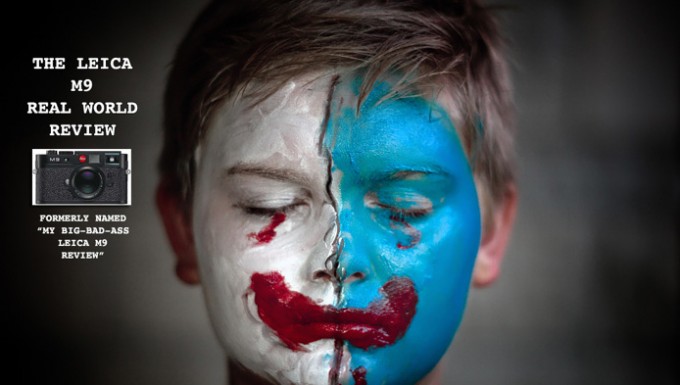


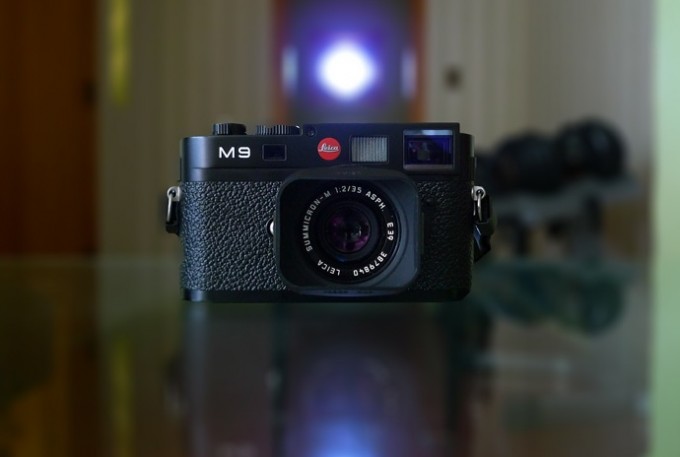
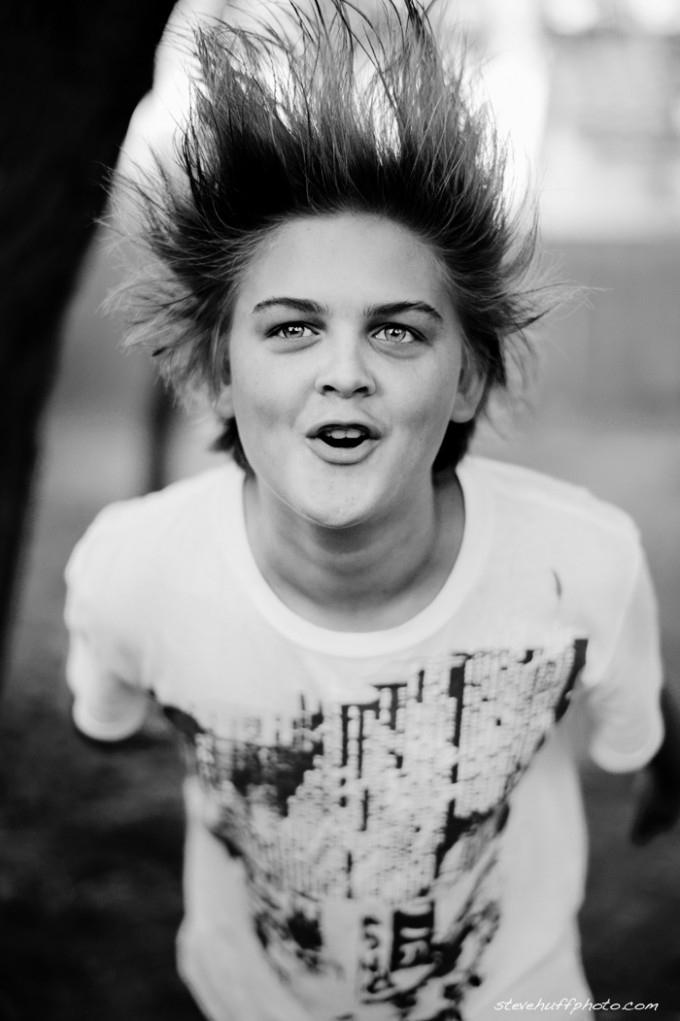

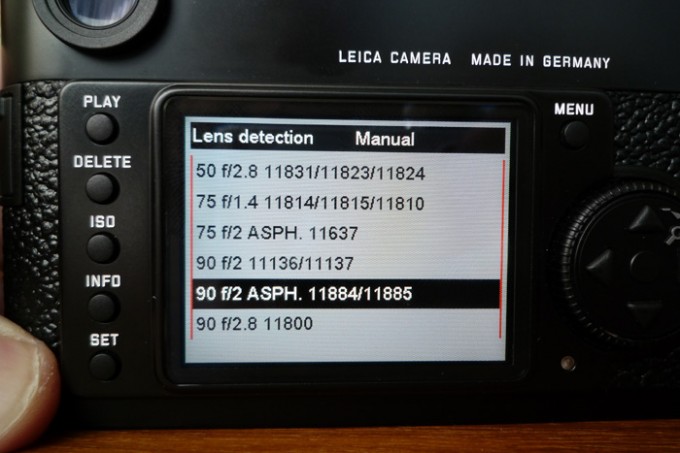
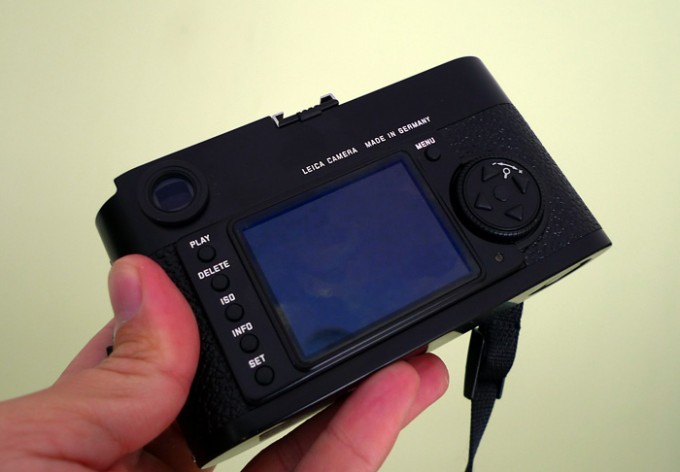
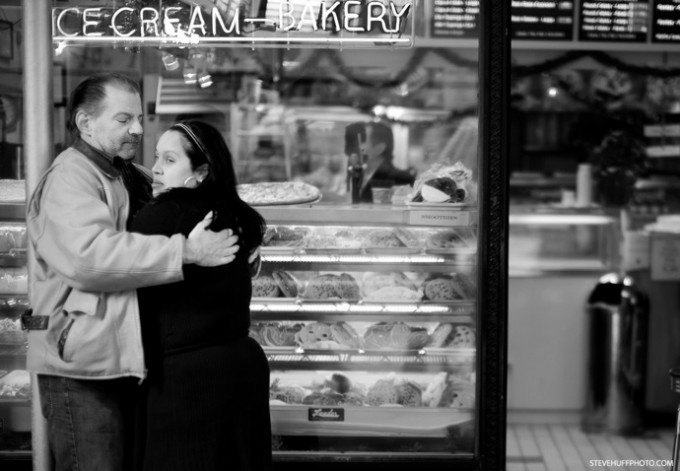
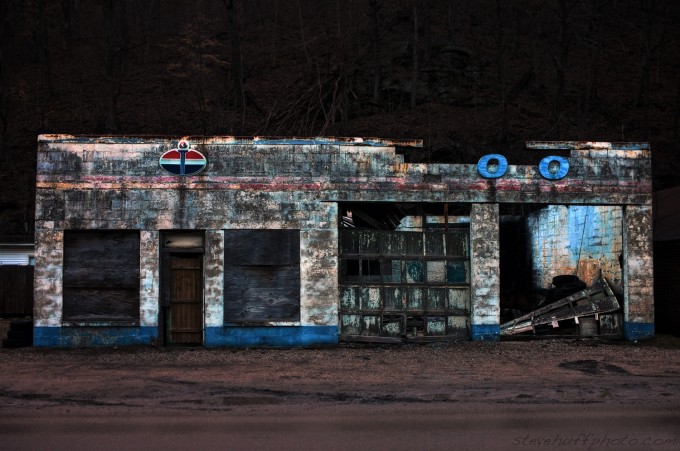
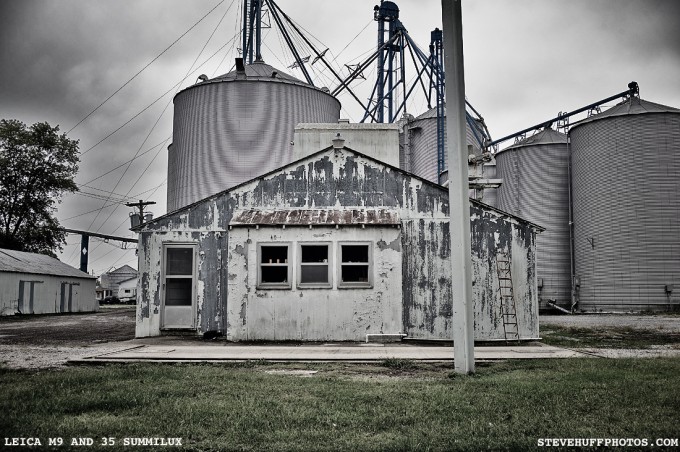
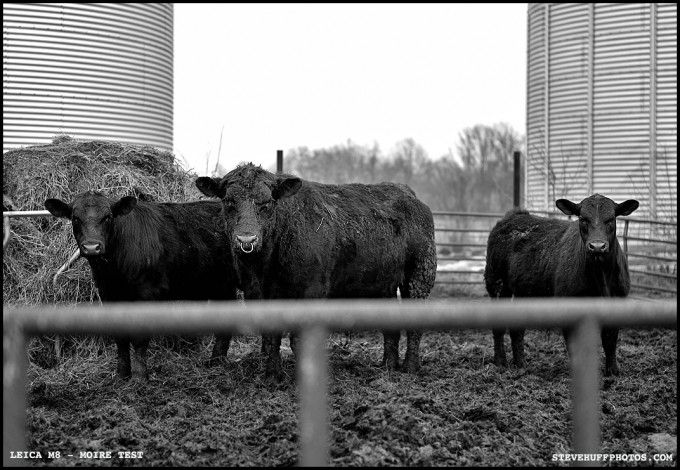
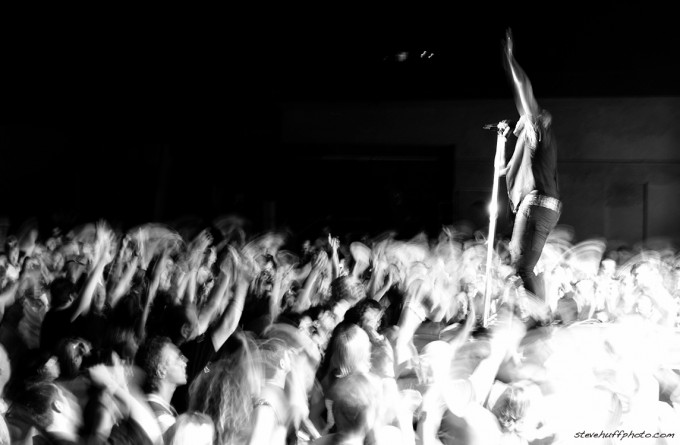
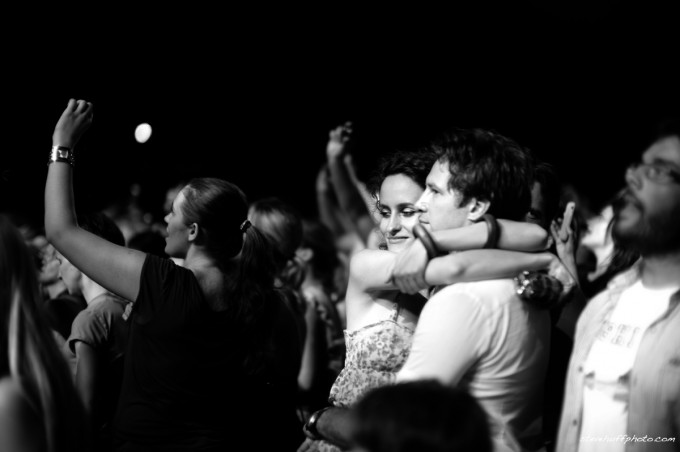
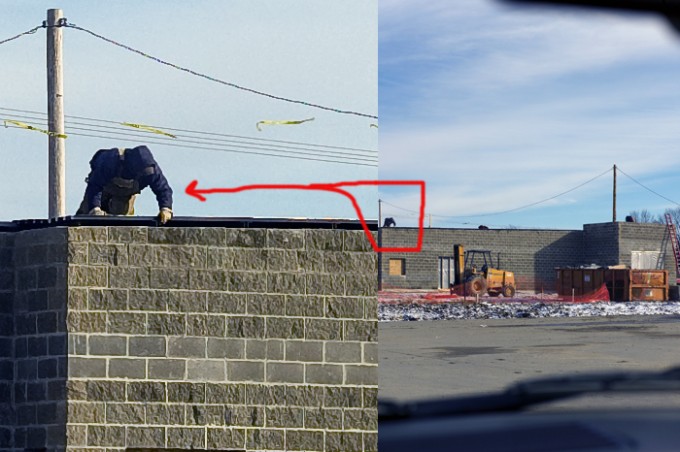
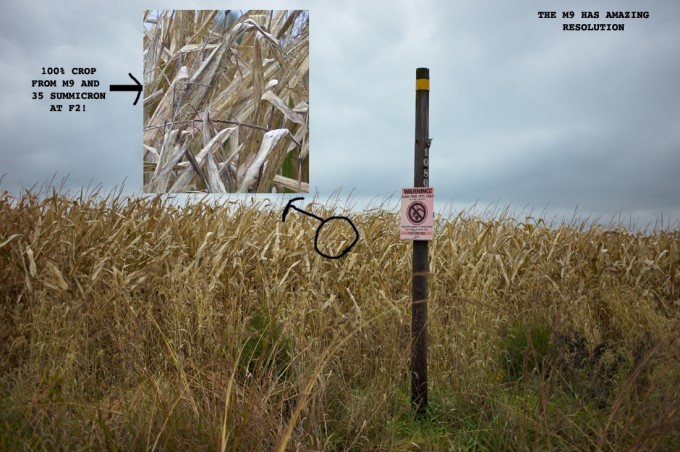
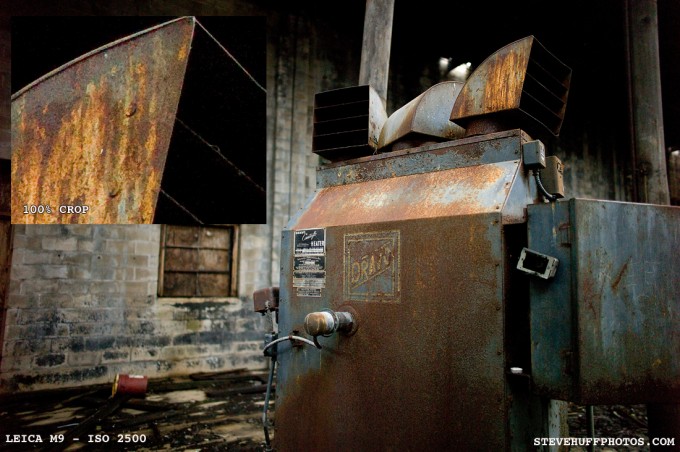
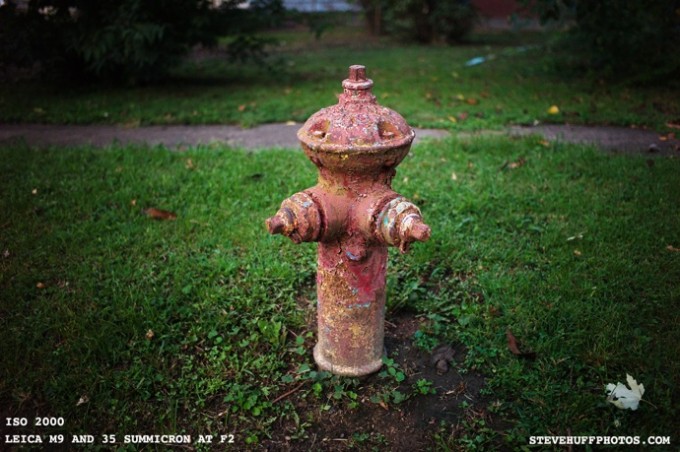
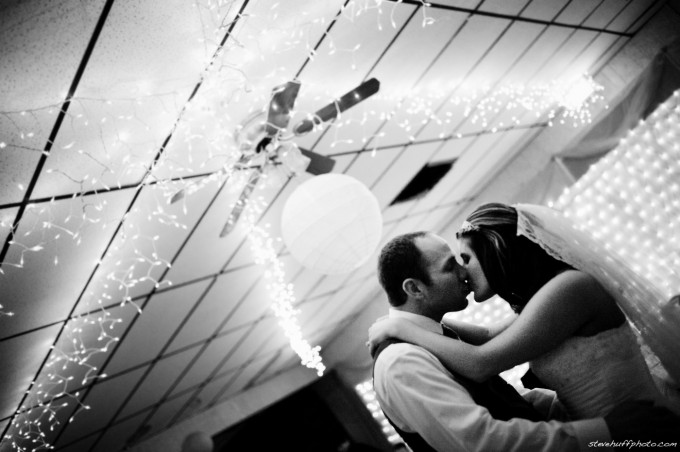
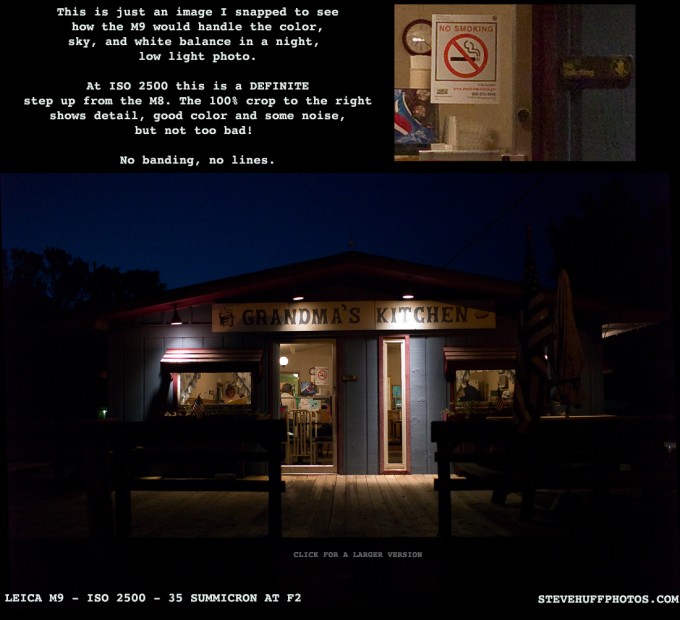
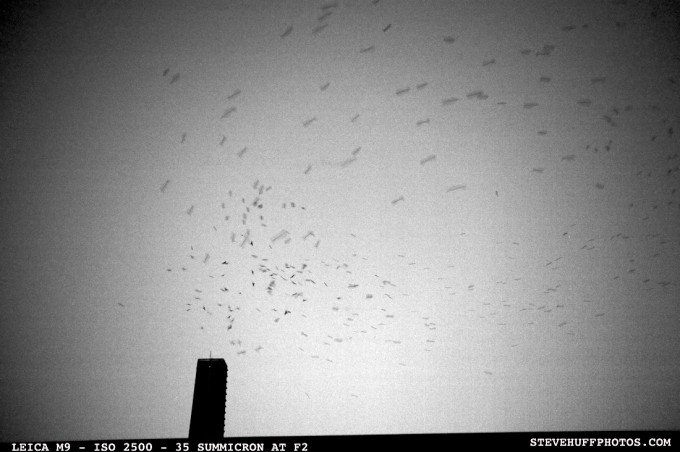
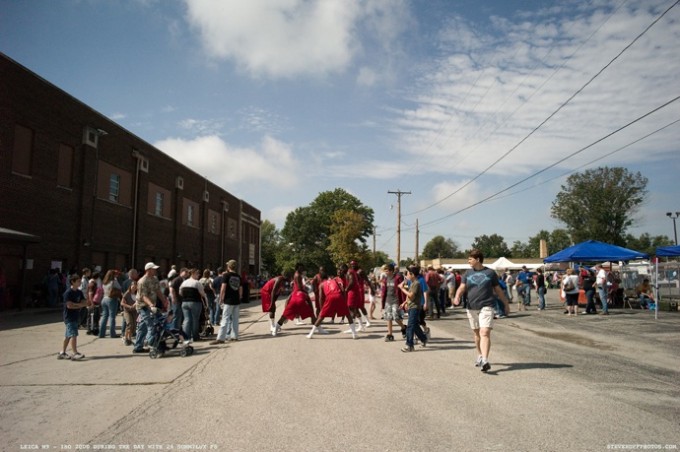
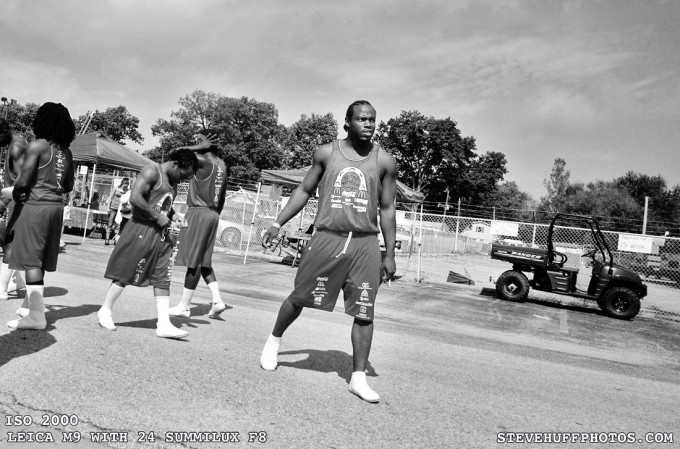
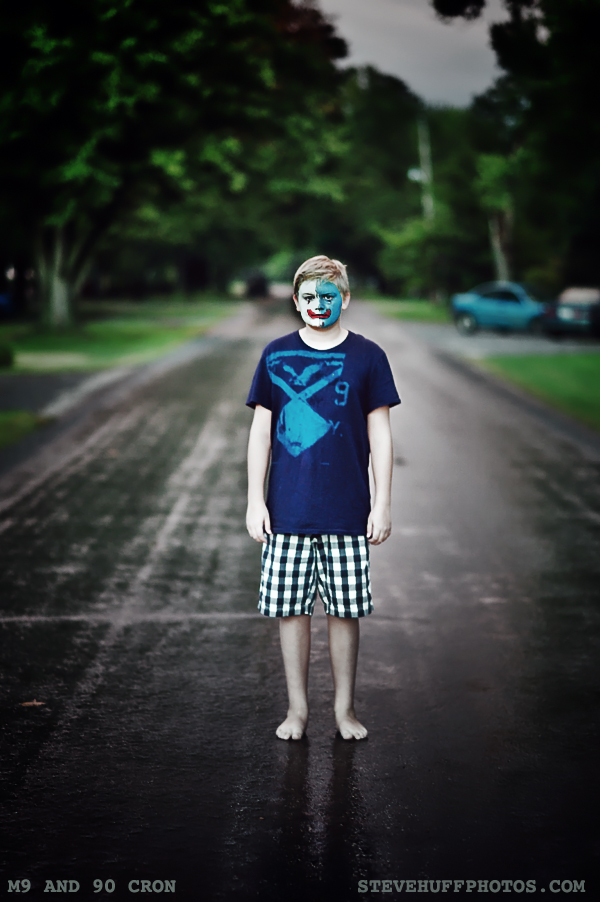
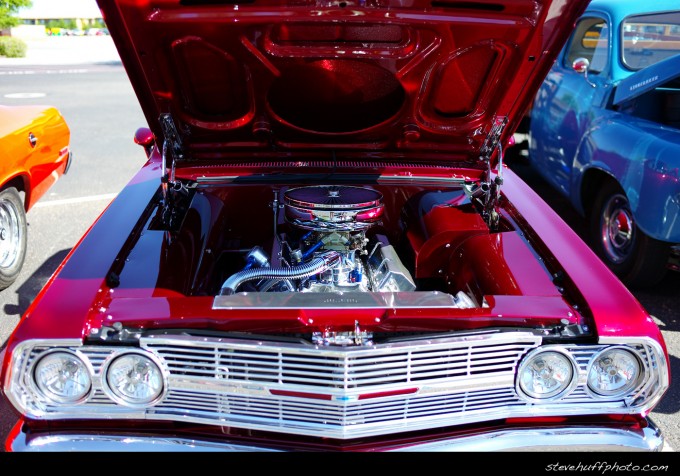
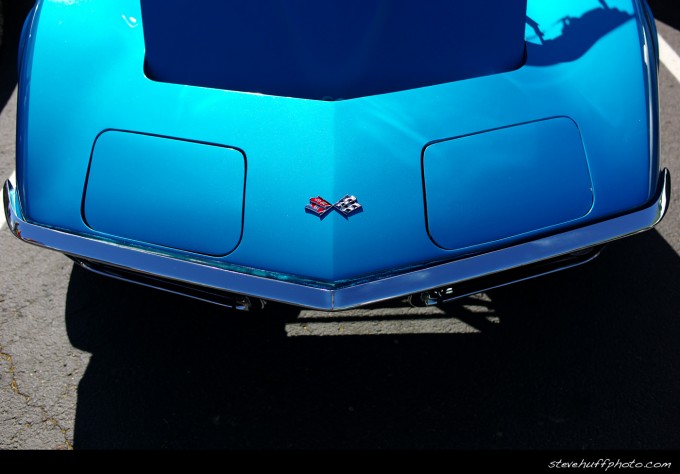
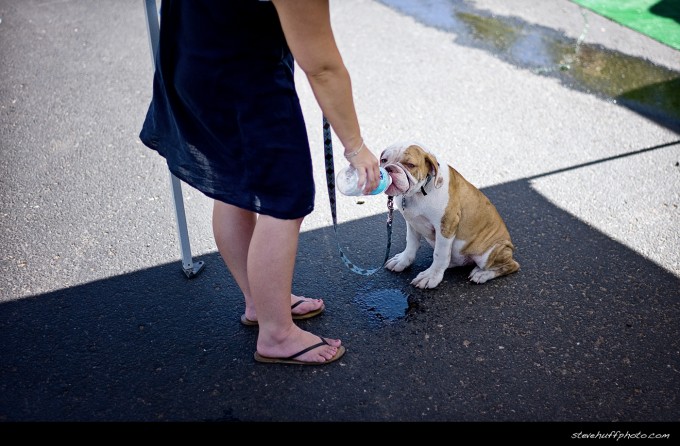
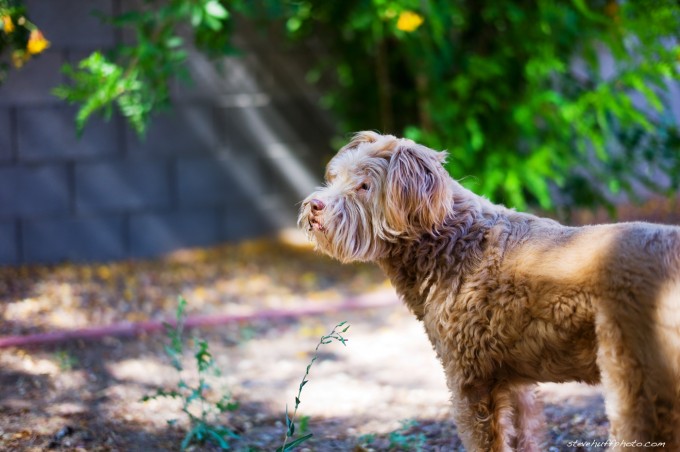
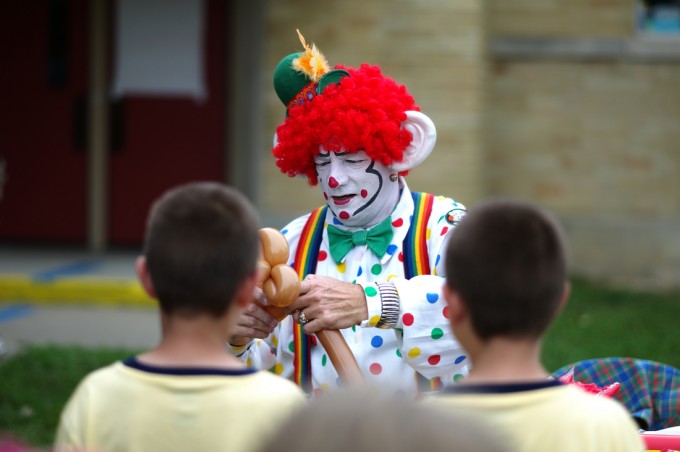
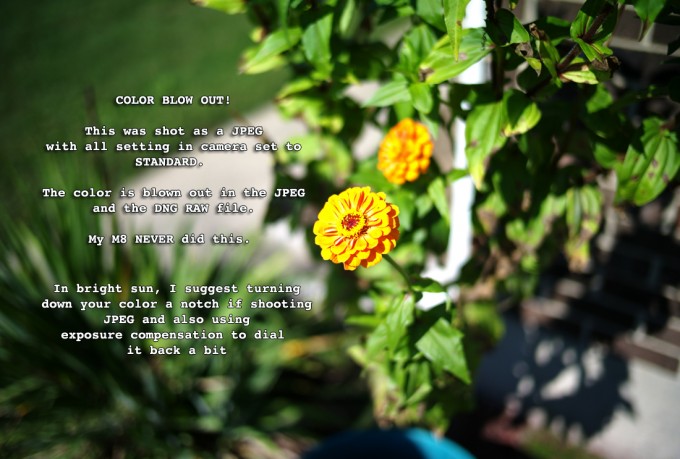
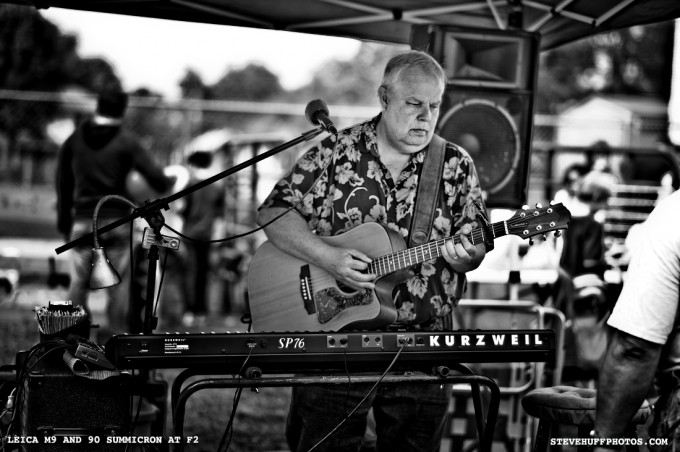
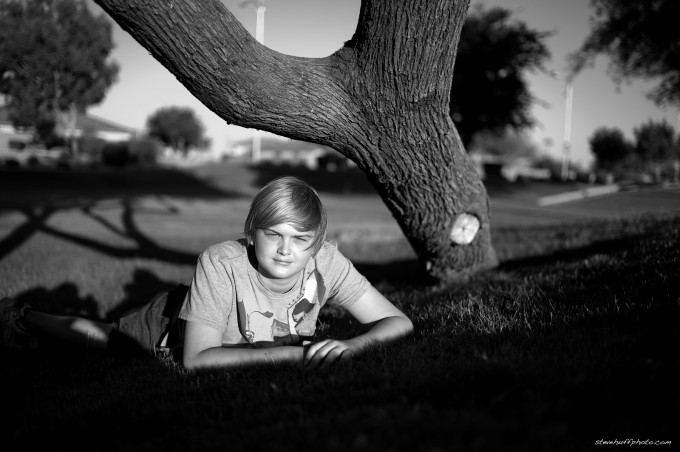
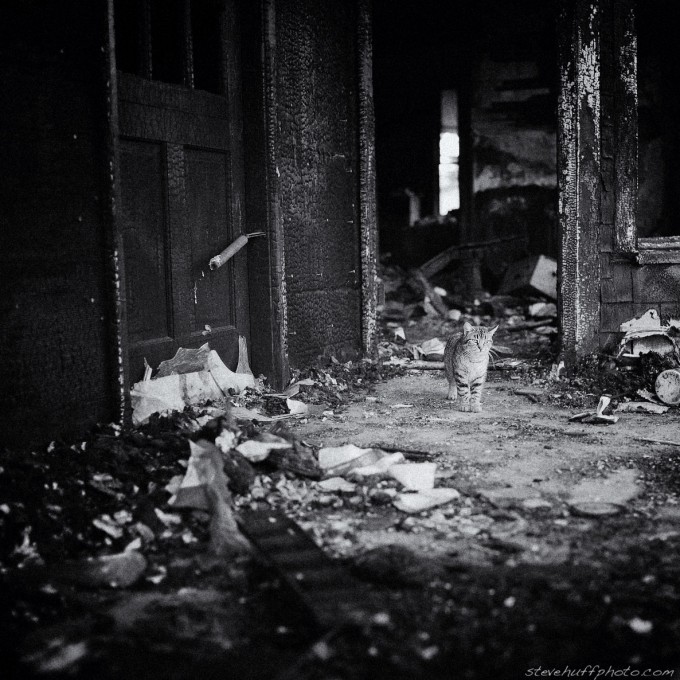

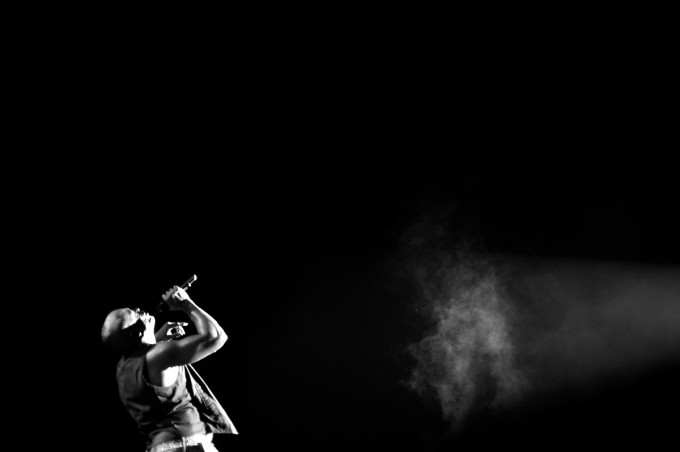
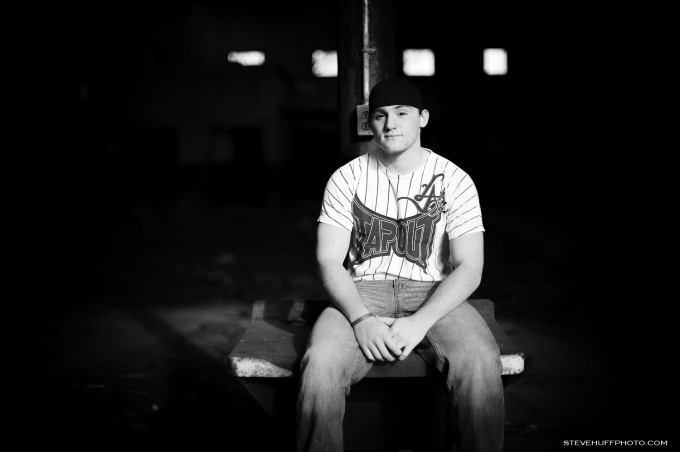
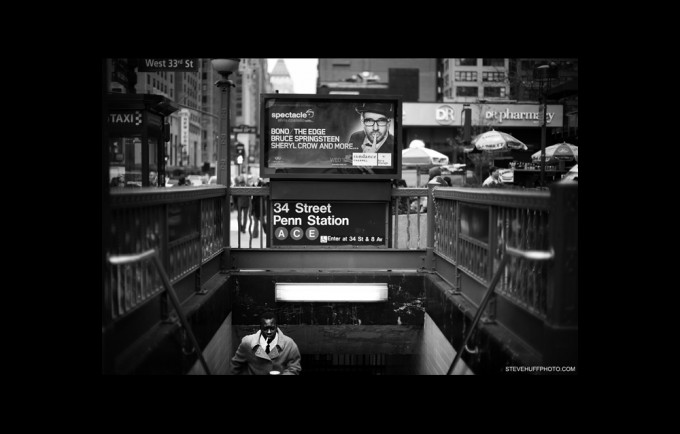
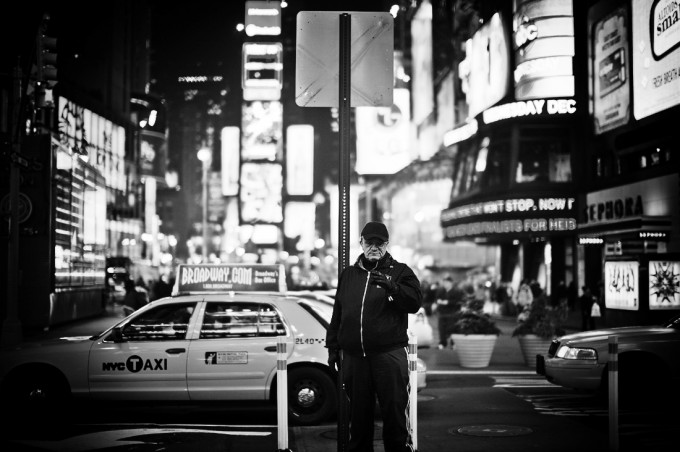
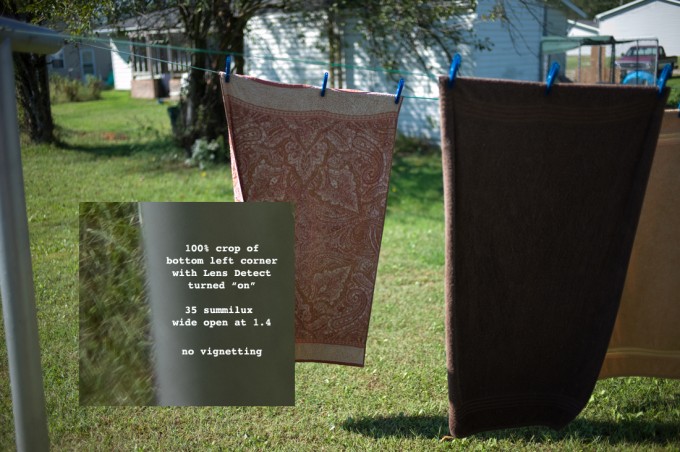
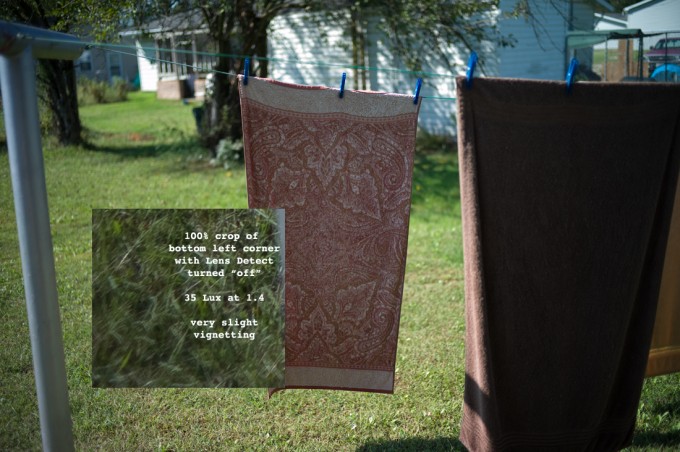
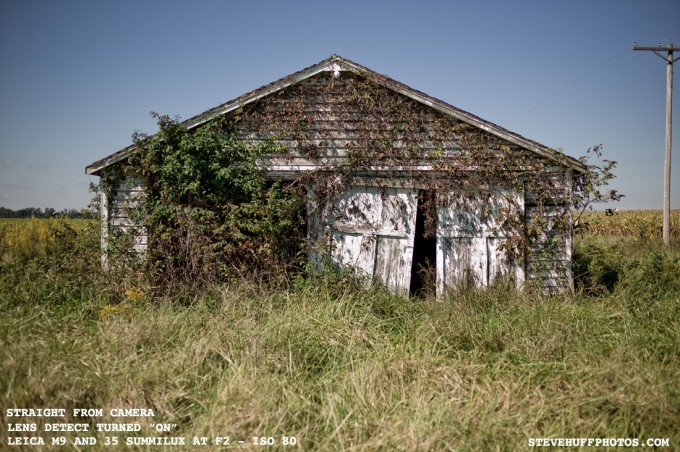
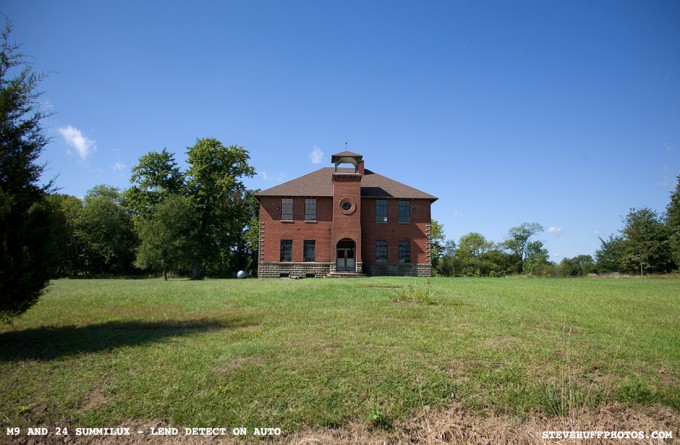
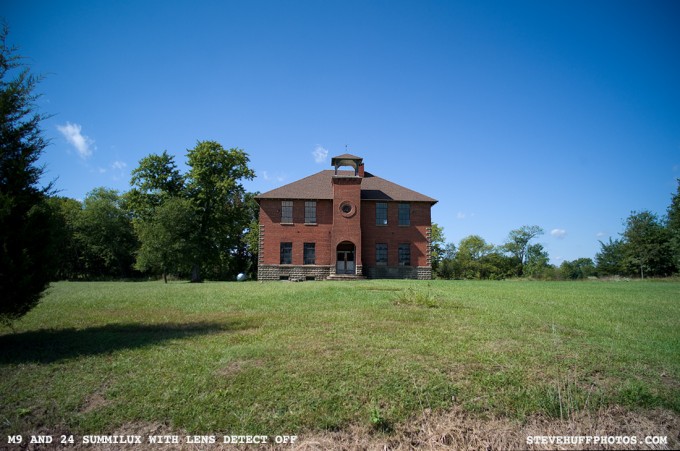
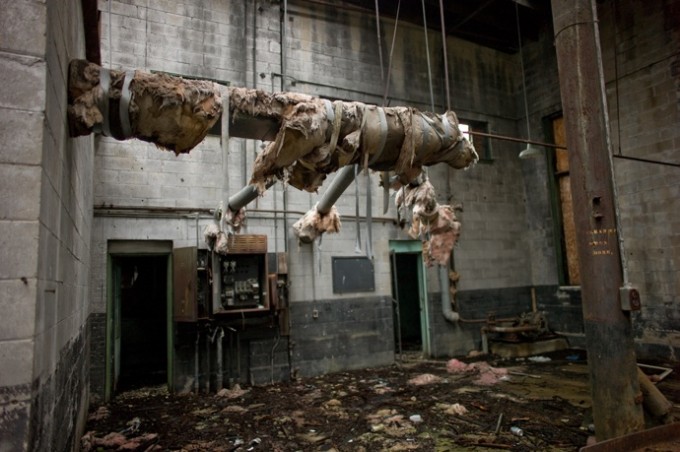
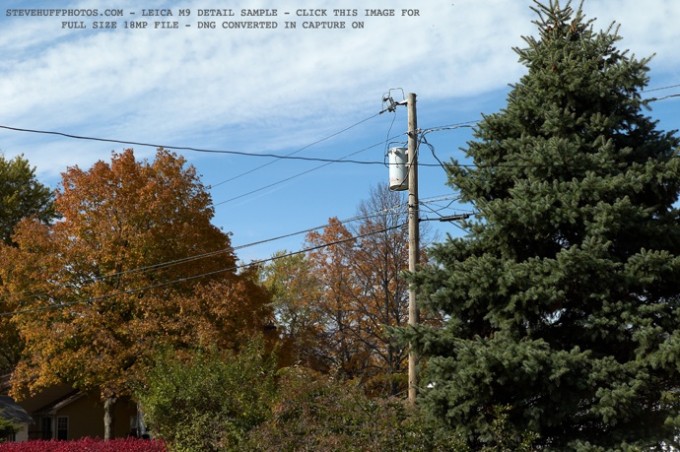
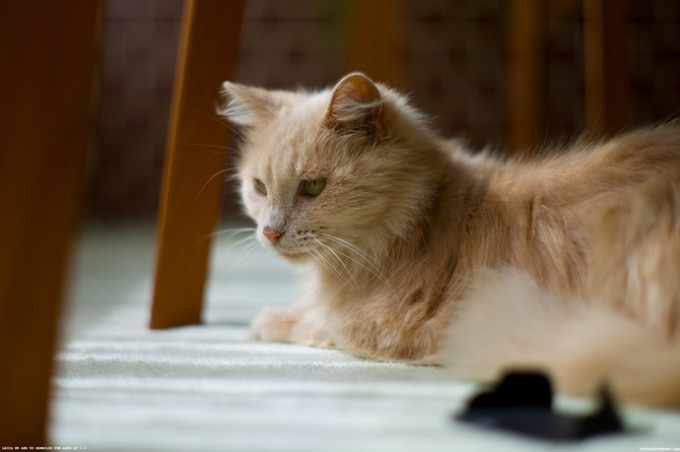
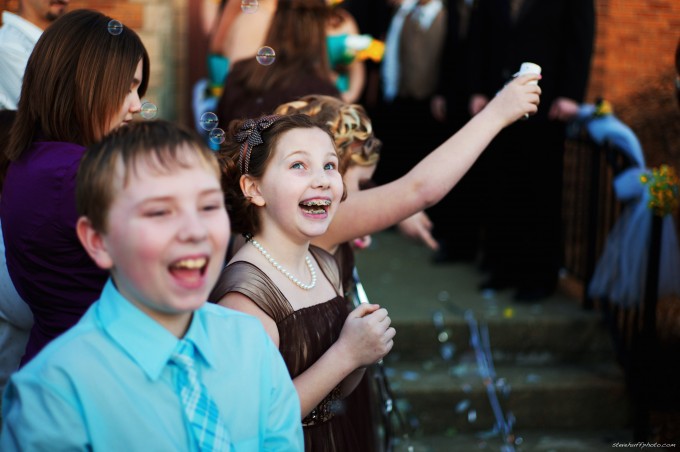
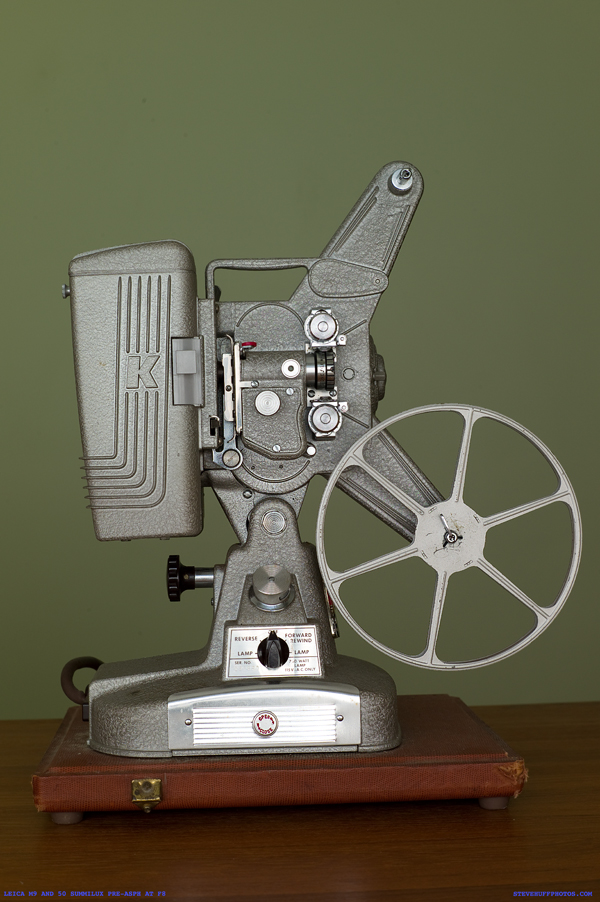
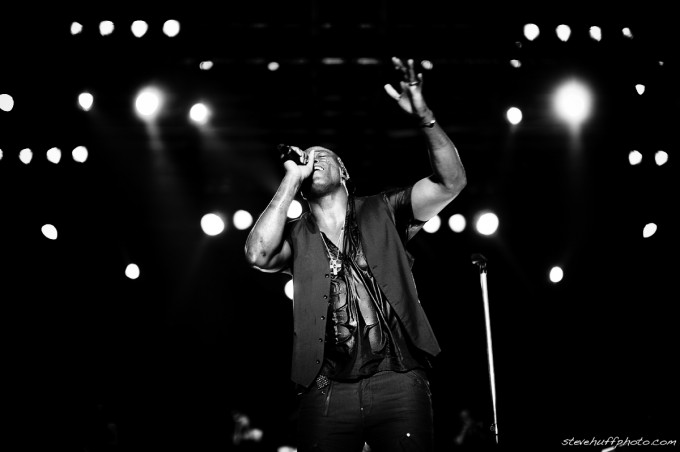
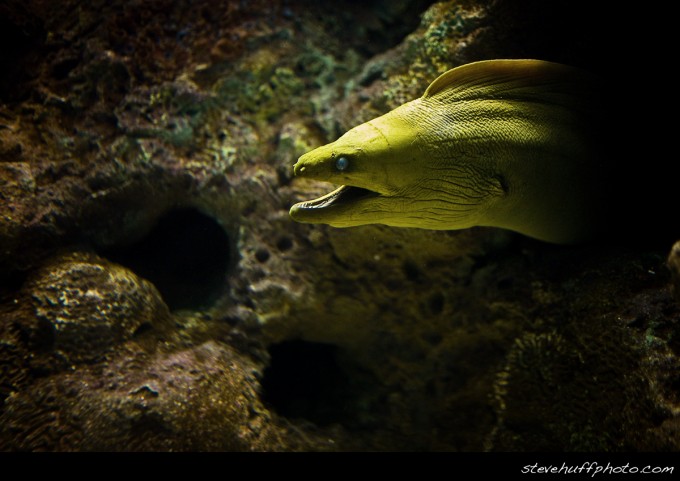
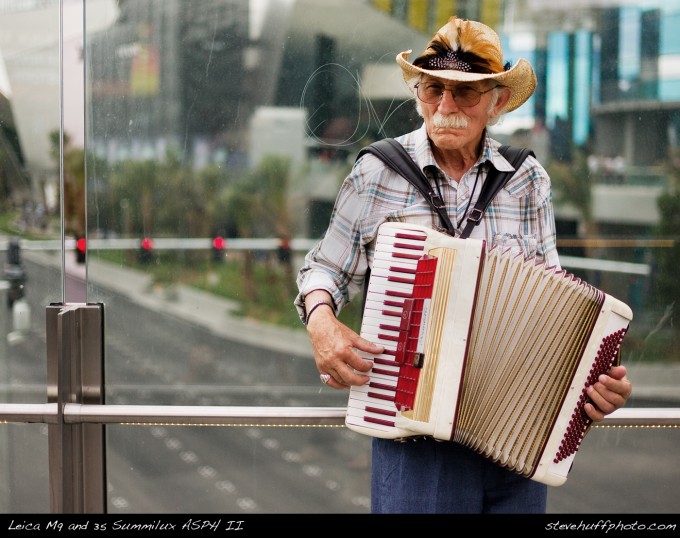
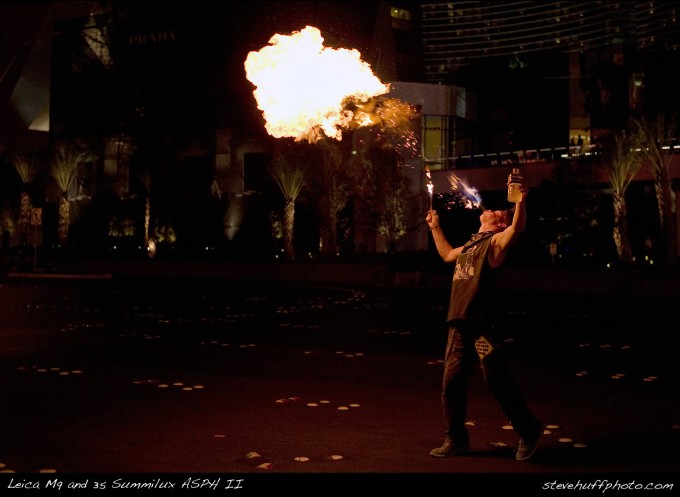
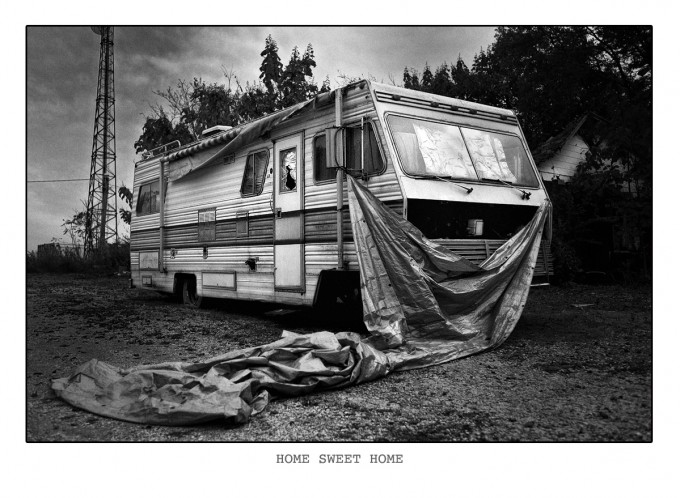
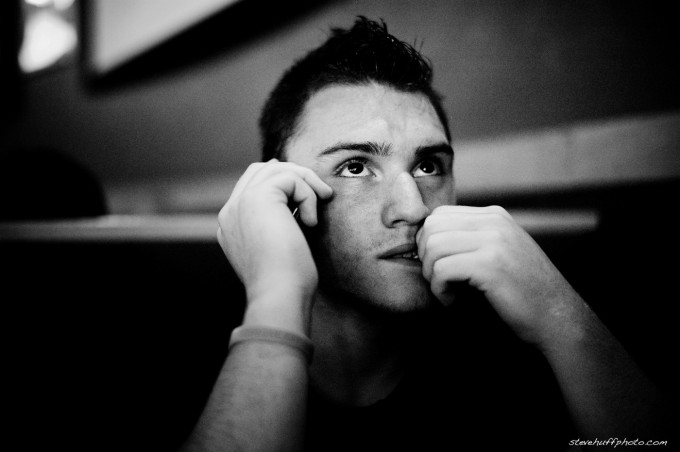

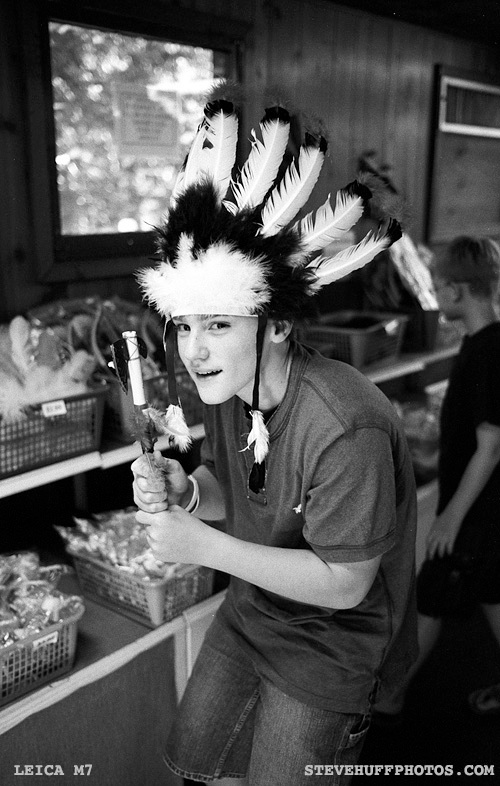
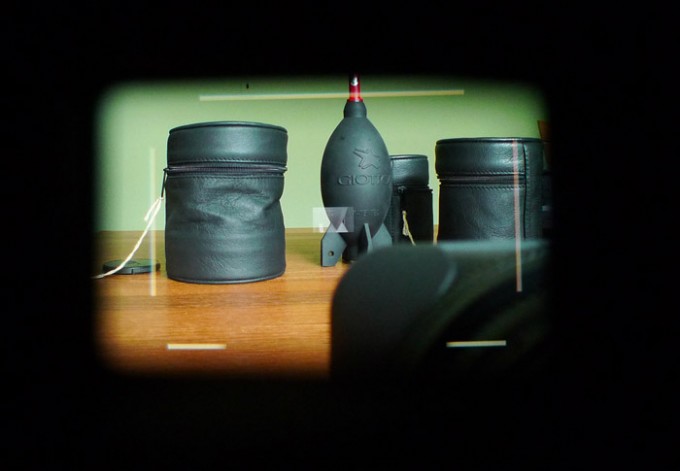


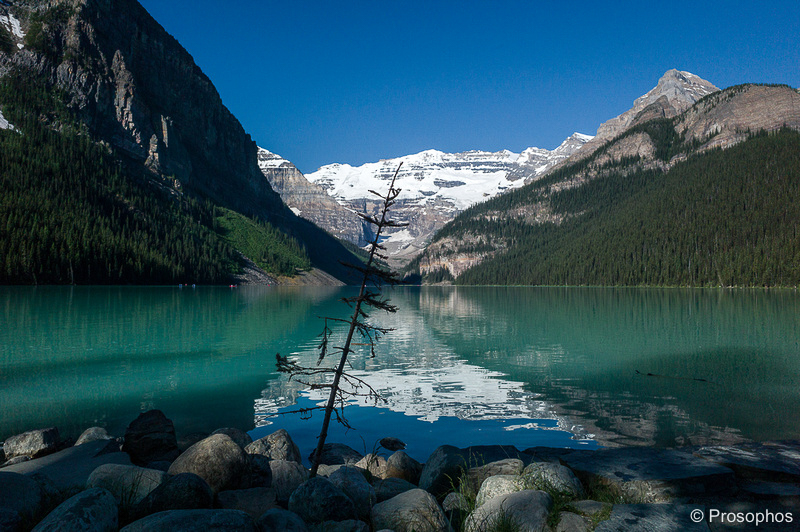
Thanks for another great review, I am a big fan of yours. I have been an avid photographer for about 50 years and in that time I have only had to have a camera serviced on 3 occasions (I had the lens of a used Hasselblad CLA’d, and I had my M3 and my M4-2 CLA’d). I have NEVER had a camera break on me (except for the M9)! Well, I finally thought that I would invest in a digital Leica. What a mistake! In four years my M9 had the sensor crack TWICE, had to have the “4-way” control button replaced and NOW has the current sensor issue problem. Additionally, I’ve had to put up with the standard M9 issues of being slow (compared to other brands of cameras) to load the data from the photo into memory, of being finicky about using different memory cards and of having operating problems if the battery is not fully charged. I finally sold it. Nobody would put up with that type of performance from ANY other brand of camera, especially one that is so expensive, but somehow we are willing to put up with it from Leica. Let’s face it the Leica film camera were, and still are the best 35mm cameras ever made, but the digital cameras just don’t cut it. It’s not really a comparable camera, but I purchased a Fuji X100s to replace my M9 as a street photography camera and it is WAY better than the Leica M9. Also, based on your review, I purchased a Fuji XT1 which is the finest digital camera that I’ve ever owned with fantastic lenses that, in my opinion are as good as the Leica’s
I’ve used Leica rangefinders for over 40 years. They are in a class of their own, as most people would agree. I love them, currently an M6 and M7. But at this point, the expense of film has become an obstacle, and my film cameras sit idle. While I’m intrigued with the M9, I just cannot get myself to make the commitment for a number of reasons.
I recently purchased a Fuji X100s and am stunned by the quality of the images, the “feel” of the camera, and what a joy it is to use. However, since there is nothing like a Leica, I will study the M9 further.
Steve, great review as always. Let’s see, film Friday helped put an M6 and 50/1.5 Nokton into my hands. The M8.2 replaced the M6 after reading this review and realizing I couldn’t afford an M9. Your site pointed me to my four Leica lenses and introduced me to the Russian Jupiter 3 (and subsequently a real pre-war Sonnar) and then the ultimate plunge, the M Monochrom. For all of that I say thank you.
I just returned from a trip to Europe for my 20th anniversary and bought a Canon 6D with 24-105 I ende after reading your 6D review. It was a non-photography trip and I wanted a single unit. Coming back with more great shots from my little Sony RX100 II than the 6D (the big Canon often stayed at the hotel when we went out) I learned that DSLRs aren’t for me, despite the amazing IQ when used properly. Looking at the shots from both the Sony MADD the Canon, I realized that just about everything was shot between 24 and 50mm, and that I could probably have gotten by quite nicely with just the 24mm and either a 35 or 50mm lens. I didn’t be
So, I ended up at your M240 review, then back here at this M9 review. I played with an M240 and an ME at my local Leica Store (the Los Angeles store is a destination in itself) and promptly sold the Canon and bought a gently used black M9. I didn’t bring the Monochrom, but should have. Next trip it will likely be the M9 with the 24mm f/3.8 Elmar and the MM with the 50 Cron for serious shooting, and just one body with the 35 Summarit for traveling light.
Thanks for the wisdom (and enjoyment) over the last few years, and please don’t stop what you are doing.
Well Steve. You’ve been very helpful over the years and instrumental in getting me into the Leica fold. I’m going to keep my M9-P, but I will not be upgrading to the 240 and I have put my M9 up for sale on eBay.
Sorry I do not allow e-bay links here (had issues in the past with scammers) but you are welcome to list it in the buy and sell here, and I bet it will sell easier and quicker and without fees. 🙂
Cutting edge technology keeps flowing in. And every new camera get a Wow. But by the very nature of the internet, readers like me get confused. Essentially I’m reading the review of Sony RX1 and think WOW and then I read this review and think Wow. So now which one is more WOW? Well my point is it just takes a minute to go back to an old review and add “This wow has been superseded by the wow factor of Sony RX1” 🙂
Hi Steve, I’m an owner of a D700 but I would really love to buy a Leica. Unfortunately M240 is not an option because right now I can’t afford it. Do you think buying a used M9 for like $4000-$5000 could be a good choice or nowadays buying a 4 years old sensor camera with poor high ISO is a nonsense? Consider that I’ll keep the D700 for night and indoor photography and that I would really love to measure myself with a rangefinder camera and the quality of Leica lenses. I mostly shoot with 35mm so x100s could be an option also If I haven’t test it yet. But I think it wouldn’t be really the same. What do you think?
Peter, Italy
http://www.peterzullo.it
The M9 update – a brilliant, balanced and very fair assessment of this great camera. I returned to Leica recently through the M9 and via an M6TTL ten tears ago, and a Leica 3A (1936) fifty years ago – and I have not been disappointed. Thanks Steve for confirming my non-professional judgement on the M9. I use mine with a 50mm f2 Summicron and a 90mm f2 Summicron and have no need of any other lenses. Everything packs into the smallest Billingham ‘Pola’ bag which is so compact! I traded all my Nikon AIS lenses to buy the M9, and don’t think I am going to regret it. My present project is photographic recording for my PhD project on remembering the GDR. I shall enjoy remembering the Leica 3A as well through the super imagery of the M9. It’s almost ‘my life with Leica’, but I think someone got there first! Great work Steve!
Thanks to all the work you put on this site, I started shooting weddings exclusively with a Leica M9. The switch was not as difficult as I thought it would be. Also, far fewer brides actually even pay attention to the fact I am using a small rangefinder. For the portraits, I do pull out the medium format though. I even started doing headshots w/my Leica 75 Summilux
I’m now totally in love with my new M9-P, I’ll use my legs as a telephoto if I need to be closer to my subject, it took me a long time to get used to my M8 (or want to), now I almost live with my new Leica M9P, and I think a 90mm Summarit would be nice, nut I don’t really need it. I was a fan of the Canon sytem, but just recently I couldn’t be bothered with lugging all that gear around.
A question for you Steve – assuming they announce the M10 in September (Photokina) – how long before it hits the shelves do you think?
Steve, how can I learn more about the M8/M9’s. I am surprised at how much better the photo’s are from my Nikon D3s. And yes, I know the difference goes far beyond the camera gear. But, wow…
Today I’m an amateur who is learning by taking hundred’s of kid’s sports photos for other Parents as well as portraits for web and print. Some day I would LOVE to photograph weddings. My passion to date is to capture “moments” and people.
Just found your site.
thanks,
Brad
Hi Brad: I shoot corporate, architectural with Canon’s and also shoot about 25 weddings/year using primarily my Canon’s. Recently added the M9 with 75 2.5, 35 1.4 asp, and 21 2.8 Biogon. The M9 is a joy to shoot with for more of my work and currently comprises about 30% of my total wedding-images count for an event. If I had another M body, possibly the future M-10 (?), then I’d feel confident using the M almost exclusively for my wedding and commercial. I feel you really need 2 rangefinder bodies one wide, one tele to capture a wedding and all of it’s spontaneity. That said, for the way I shoot I’ll still need a Canon body for very long tele shots on the wedding side and I sometimes I need to be tethered to a laptop on the commercial end. IF you’re interested in seeing the versatility of the M9, here’s a link to a small gallery of images I shot with it since this past April. http://duzynski.zenfolio.com/p792997310 A mix of commercial and wedding work.
Hi Brad,
You will soon get sick of shooting weddings.
Stewart
Dear Steve,
Ref: “My Updated “Big Bad Ass” Leica M9 Review”
I love your photos very much. Would you please tell me what setting did you use:
1) Saturation; 2) Contrast: and 3) Sharpness.
Thanks.
Regards,
David
I shoot in RAW with the M9, so all adjustments were made during the RAW processing.
Dear Steve,
I have a M9 with Elmarit-M 21mm 2.8 and I always shoot in JPEG fine. I found that if the contrast is set to standard, the pictures seem quite dark sometime. If the contrast is set to low, the pictures seem normal. Have you encountered this problem? Have you ever tested Elmarit-M 21mm 2.8 lens before and what is your comment on this lens, please.
Thanks.
Regards,
David
Hello
I love Leica ,but
cracked sensor M9,from #3.8xx.xxx to 4.207.xxx today.
why?
what is the problem?
Hi Steve! I have been reading you website for the last four weeks. Last weekend spend almost entire saturday trying the M9 at a local store but simply couldn’t get a hang of it. Wed went again with it started to get better. Last week put my entire nikon set (D700 + all pro zooms + all pro primes ) on craigslist. Day before yesterday got my M9 + 28 Summicron and boy! Talk about addiction!! Wow!!
Again thanks for the excellent and informative reviews. Reduces the decision taking time to almost nothing.
There are mirrors in the rangefinder mechanism!
Hi there,
I have a question about the compatibility of M9 with another brand of M lenses, more precisely I have Minolta CLE with the 3 M-Rokkors 28, 40 and 90. Do think there will e a problem to use them with the M9 body?
Thank you!
Best Regards,
Christo
The only thing that I don’t like about Leica M9 is its noise problem. Even with apertures 1.1 it creates quite a lot of noise in low light situations. Or maybe I’m doing something wrong. I don’t know.. Other than that it’s a dream camera :o)
Hi Steve! I bought an X1 about five months ago (after my father pointed me in the direction of your wonderfully helpful and inspiring review), and it has made me fall back in love with photography after abandoning it for a decade. Now (can you guess?), I have M9 lust, and I’m saving my pennies… I have one question though (forgive me if you answered this elsewhere): can I shoot RAW-only with the M9? With the X1, you get that extra jpeg with the RAW file, and it drives me a little bonkers to go through and delete the jpegs (because I almost always fiddle with the RAW file in Nik’s suite of goodies; again, thanks to your recommendation of Silver Efex!). Thank you for your wonderful site.
Thank you Steve for a truly inspirational review. After 26 years of shooting pictures for clients to make a living here in the UK, I now need to return to my roots and discover true photography again. I’ll keep the 1DSmk3 for the packshots and will buy myself an M9. We only live once….
Great review Steve. I am brazilian amateur photographer who is considering to switch for a rangefinder. I would love to own a M9, but don’t have the money to get one right now. So I am thinking about to get an used M8. I’ll be in NYC next week, do you know a place there that I can buy an used Leica for the price you’ve mentioned in your review. Thx
Does anyone have any experience with Leica warranty? I’ve read (DP Review) that things can go sideways if there is an issue with the sensor (not Leica manufactured).
Thank you for a super review.
I have always imagined that I’d get a Hasselblad when I grew up, but I think you have convinced me otherwise. I am now grown up and I have saved the money required (which is enough for a good car). My only concern is the processing power in the M9 that has been mentioned as slow. Do you have any thoughts on how the M9 will stand the age of time in terms of processing, considering my first generation iPhone is already outdated? Would you imagine there would be updates?
Steve, your review completely captured the spirit of the M9. Your feelings about this camera are inspiring. I appreciate the comparison to the M8 cameras, but most of all what comes through in your reviesw is the love of Leica rangefinder photography now in the digital age. Great job!
I HAVE A DREAM! One Day I’ll get a Leica M camera.
Just finished school and now looking for a job. Completely unrelated to photography (chemical engineering). So it might take a while for the dream to become reality. Until then I shall keep reading your articles and dream more…
Thanks for the very detailed review! I shoot with a dSLR 99.9% of the time, but what you said made me think about trying out a Leica. A Leica might not be suitable for images which require blazing fast auto focus, but for other genres, it might be better than a dSLR. Anyway, looking forward to the day when I get my hands on one 🙂
Hey Steve,
fantastic work on real-world review, seriously great writing… I just wanted to point out that M9 is not in such short supply in Germany and couple of other European countries. Couple of months back, I was planning on buying one and emailed few dealers in Germany, Munich and Berlin to be exact, and I got 3 replies saying that they have M9 in stock, or can get one in my preferred finish within a day or two! Big dealers have problems, but if you’re willing to put some effort, you can easily find one for yourself. At least in Europe 🙂 In Croatia waiting is horribly long, but for 200$, you can go to Germany and buy one the very next day 🙂
regards,
b
after years of using 1ds’s and 5D’s with L primes and some zooms, and after a year having a lot of fun with the Lumix GF1 and EP2, I was all set to get the new GH2 model which will be out in a month or so, but I am now serously contemplating selling the lot for an M9
I have already sold most of my Canon zooms to finance a 35mm lux and a 75mm cron which I have enjoyed using greatly on my EP2, I only have the 5D2 body, 85mm 1.2 and 35mm 1,4 primes left. I keep these for when I want ‘very high’ image quality and a great limited dof look. I now have a feeling that after getting the next model along in the M43 game, I may well feel that the look I want still eludes me.
I enjoy using the 35mm lux especially which acts like a 70mm in m43 terms but I know I really want the look of a 50mm lux on an M9 combined with the portability and discreetness of m43. I use the 35mm lux almost exclusively on the EP2 even though I have a bunch of AF lenses. I have become faster with the focusing but find the magnifying options very useful in achieving perfect focus.
I did the sums and if I sell everything including the 35 ASPH lux, I can have (availability permitting:-) an M9, a 21/24mm (used Leica or Ziess) a 50mm ASPH Lux and my 75mm cron ASPH APO – and it should cost me about £100-£300
That sort of line up would be easy to carry and would surely produce stunning results for the kinds of images I shoot (landscape street portraits) I have played around with an M6 and M8 in shops and I reckon I could adapt. Does anyone here have any thoughts on my move into rangefinder territory?
I think was is abundantly clear is that we all have our preferences and perhaps in that lies the attraction of photography. I would just say though that often people convince themselves their way is the right way for the wrong reasons. Sometimes it is laziness, budget contraints, tradition… there are many. Sometimes of course, a person is just right too and their reasons are justifiable rather than rationalising ramblings. I still stand by my view that the easier something is the higher the possibility of poor quality.
Great story about Adams though…
Steven B,
By any chance, do you hold Heinlein’s “Starship Troopers” as one of your favourite novels? I simply note some parallel values. I’m also very glad my toy camera story brought a smile.
While automatic review makes chimping very tempting (and possibly make one miss the next moment, and may take up as much or more time than actually observing the world), I think the “machine gun” approach is quite rare, and not unique to digital. Film SLRs reached a pretty decent fps, as I recall 8fps is doable, and extra canisters of film are easy enough to carry around. Now in the context of purchasing cameras at a Leica level, one could certainly buy a high-speed DSLR for that price, but we’re talking about the M9 and M8 here. Technical capabilities and baggie-of-film-vs-large-files-on-SD-memory aside, why would someone machine gun the typical subjects of an M series camera?
In reply to this latest post to Konstantin, I would say I completely agree with your assessment of the value of a photographer’s reputation or apparent skill. The context can greatly enrich any work of art. Another famous film example is Ansel Adam’s moonrise over hernandez (sp). According to all the people present in the car, Ansel was driving when suddenly he saw a photo opportunity, quickly set up his large camera and gear, realized that he’d forgotten his lightmeter in the car with seconds left to capture the scene, and GUESSED the appropriate night-time exposure. Extremely impressive, especially since everything happened in less than a minute and then the composition was gone. However, in Konstantin’s favour, an image in a portfolio needs to stand alone, without “qualifications” or excuses to boost value to a customer. With a portfolio, a photographer really needs every advantage to get a client or career position. So, I would conclude that the journey is more important for fine art and personal hobby, but the end result is most critical to a portfolio. Same as it’s always been.
[img]http://images.artnet.com/artwork_images/424216256/304271.jpg[/img]
I currently own 12 or so cameras, but I mainly use an Olympus E-620 for quality/budget reasons. I borrowed a Leica M6 once for a class, and a Digital M is my eventual dream camera, but the E-620 is fun (and lets you flip the screen in to face the body) 🙂
Thank you for coming back and replying to my little essay, there’s always the chance that the effort will be lost and go unrewarded. Sorry for hijacking your note to Konstantin.
Konstantin,
You ask some very important questions and I think a lot of people would be afraid to ask them of themselves. It gets back to the machine gun approach. Yes, some very accurate shots but looked at in aggregate reveals very little skill at all. I read an interesting article the other day in which it said that one of the keys to enjoying life is to have some sort of mastery of what you do. That means, to get better and improve at what you do. Whereas I concede that there is a degree of mastery in picture manipulation (photoshop), picking 1 frame out of a 30 frame burst or extracting a still from a video – it still pales in comparison to catching a moment instinctively by waiting and pouncing on the moment when it comes armed with only one or two frames. In the end, there is more difficulty and more mastery involved in single shot photography and hence it is more enjoyable.
On the marketing side there is a big advantage too. I would pay much more for a unique shot knowing that only 1 frame was taken of a moment and I owned that print and that single film negative. That has value. A digital print from a digital file from one of a 30 frame burst or worse still, a still taken from video (yuk)? I doubt that has much appeal in the eyes of a purchaser/collector. I think there is not enough emphasis on how the photo was taken. People focus on the final result rather than the process – but it is the process and the ‘skill’ of the photographer that has the value in my view. Just recently I read about certain world famous paintings that were discovered to be the work of a famous artist’s student, rather than the artist himself. The value plummeted overnight. Why? Were the brush strokes not as good? Was the colour not as superb? No, they were just the same as they had always been but they realised the skilled hand of the famous artist was not used and as such even though the end product (the best of the bunch that make the portfolio if you like) was great – nobody was interested any more. The scribble of a stick man by Picasso is worth thousands as would be a random photo of a cup of tea by HCB… but, ask youself why? The reason is that the person who created it has the track record of skill, has proven themselves time and time again and have incredible understanding about what they do. Also, there is only one scribble and one negative.
Food for thought.
Hi Steve,
This is my first post on the your site, but certainly not my first visit. Having turned to your site for Leica information for the past 8 months, I think a big thank you is long overdue for your fantastic effort and inspiration. Like many others here, I became a Leica fan because of your reviews and I’m hoping to be an M9 owner soon! Your approach in reviewing these equipments is really what everyone needs, please please keep them coming!
This whole discussion makes me think (which is good) about my statistical side – the side that needs to ask the question now (out of curiosity, NOT out of being-the-devil’s-advocate): are we talking about better (whatever that is) quality PER PICTURE (on average) or are we talking about better quality of a portfolio (the top selecd pictures)? And this question i think is vital in this discussion because depending on that,photography training may need to be redefined, artistic merit would perhaps change, not to mention how this can be used in marketing. What do you guys think?
trying again:
Taken in New York last week after the rain storm, evening. (M7/summilux 50mm/ Reala 100)
http://www.flickr.com/photos/37556068@N06/4863613641/
Stephen B,
I started photography with film and “toy” cameras in a few years of summer camp. You know, the ones locked into the “sunny 16” rule and the “focus free!” feature. That, and the more flexible (HA! But true…) pinhole cameras were my only photographic medium for probably about 3 years. All black frames were a bummer, but there was something magic about the enthusiastic clicking of the film advance wheel, “framing” through that big fisheye viewfinder, popping that loud spring shutter, and eventually, finally, reaching the end of a roll so I could do the canister maraca and beam the negatives through an enlarger. And there’s no print like a wet print… well, except maybe your final iteration that is mounted and framed on display.
I eventually got an automated film P&S that was able to change exposure (plus flash! Woo!), which later served alongside one of those 3 megapixel Olympus digital bricks. Ever since, I’ve continued to run both film and digital systems. Now, I’m no pro, and though I’ve been into photography almost all my life, I’d say using digital is my preference. If you knew me, you’d know that I’m the type who makes small drawings and paintings, and the “penalty” potential of using film keeps the camera home most times. It’s an anxiety thing. Digital actually has far less potential for screwing up an image, and you can be spontaneous or you can work at getting an important image right. If the shot matters, I really want to get it right. For me, the journey is more involving, and I learn just what exactly this light or that composition looks like on capture, rather than trying to remember the scene later. One can only learn from mistakes, and mistakes only teach if you know what went wrong. Controlling exposure and colour (or tones) is what makes me think, not opting to wear blinders.
I really like Leica, because everything feels natural and still has that tactile connection, but it’s Digital Leica (and otherwise) for me. I would rather (in most cases) use digital than film, same as you would rather use your M7 than my old toy camera from 18 years ago – which I just found in a box under my bed, and fiddled with while writing this.
P.S. The idea of cropping a frame from video is abhorrent to me – not only is there the inherent degradation of quality and generation loss, but I don’t want to spend my life wading through moments again to figure out when I should’ve pulled the trigger. Call me a hypocrite, but all that time post-production would kill the enjoyment for me; I already know rotoscoping isn’t fun. If I want video, I’ll shoot with intention for video, but if I want to catch the moment where Mohammed Ali looks dominantly and triumphantly over his opponent (which wasn’t noticeable amidst the action, even to the photog who shot it), I’ll capture a slice of life with a still image.
Hi Everett,
Good response and also thanks for sharing the memories of the toy camera. Really made me smile. Regarding digital v film, I have a number of cameras (a couple too many to be honest) and most of them are digital but the one that is always with me is my film camera. I have tried having just the digital and I just felt more comfortable with the film one, mainly due to the quality of the images (composition especially) that I was getting. Hey, it could just be me that needs a penalty to actually think about the shot! Lol
My main point though is once a young photographer understands simplistic exposure (and digital is great for this) his/her next task (and one that nobody every completely finishes) is to learn composition and timing, learning to capture character, emotion…the essence, the ‘moment’. Digital is fast so when a moment is going to happen over the next few seconds, the tendency is to put it on continuous fire and shoot 30 frames (depending on the camera) or 10 frames per second and hope that the ‘moment’ was there somewhere and that the camera caught it. Compare that to the shot of Ali. The photographer probably had 1 frame (2 or 3 if he was extremely fast) and… he got it. I know he probably did not consciously know it at the time but when you know you only have one chance, you tend to be super observant, super focused and lighting fast (in your reactions and thinking). To be honest 10 frames a second is not so different from taking a still from video. The skill is just not there in comparison to the person who gets the shot with one frame.
I know I am talking here about the problems that come about by having rapid fire digital cameras (something the M8/M9 does not have) and that before I was talking about the problems with easy processing (that the M8/M9 do have) but I think it is worth pointing out because it is also a contributing factor to the millions of thoughtless images that choke the net every day.
I just really believe that the easier it is to capture the ‘moment'(whether due to the ability to check exposure and composition or shooting continuously in a ‘video-like’ style) the less people tend to think and with the lack of thought they get disconnected from the person, the situation and ultimately the ‘moment’ and so rather ironically, the moment becomes more elusive. I know some people say they go out and switch off the screen and don’t look until they get home but frankly, I just don’t believe that people do this consistently. There is something about the power to look that is all consuming and although some might have switched off the screen on occasion, I would be surprised if they do it consistently. When humans have a weakness, its best to avoid rather than resist. Such as if you are trying to diet, don’t buy a whole lot of candy and store it in the cupboard!
That is not to say that digital does not have its place and random, fun snaps of kids running around in a sprinkler in the garden is perfect. One shot though? I am convinced if you gave a film M photographer the M9 and a digital M photographer the M9 and told them they had to go out the get 10 pictures only. No deleting, once you reach ten, you are done. The film photographer would wipe the floor with the digital photographer in terms of capturing the moment (unless of course the film M photographer starts chimping immediately after finding out about the screen! Lol). I know a lot of people will disagree and some will agree but that is what I believe as my digital self is a much poorer photographer than my film self.
[img][/img]
This might not work…
@ Konstantin
I agree there is a lot of learning that can be done with digital and I would even go as far as to say when one is learning the basics, it probably is better to learn with digital as the pure speed of feedback allows for a much sharper learning curve. Once one has mastered the basics however the learning curve (with digital) flattens out considerably due to the lack of penalty involved. Digital helps when it comes to learning basics but it hinders when it comes to mastery.
I have heard of the ‘still from video’ idea and frankly it will just compound the digital learning impediment. It will certainly have its uses, don’t get me wrong, but will it produce skilled photographers? More like skilled croppers. Don’t forget, the best kind of fishing is with the lightest tackle you dare to use. The feeling of satisfaction associated with one on one fly fishing compared with drag-netting is beyond measure. Also, don’t forget that in the original Preditor film, Arnold killed the preditor by going naked and covering himself with mud. The ultimate shot often requires the most basic equipment 😉
Brilliant analogy!!! 😀
I did actually write something about the simplicity of the range finder vs. the DSLR on my website: http://imperfiction.com/2010/03/how-has-it-been-to-switch-from-canon-eos-to-leica-digital/ but I am yet to really venture into film to discover that level of comparison.
(I was also not sold on the video/picture idea but we’ll see – that’s in the 20-year future).
great article
I am still learning with my M9 – only had it since May. My previous Leica experience was the M3 before I moved to D/SLRs. My wife brought me back to the rangefinder. I agree with most of what you say. I am disappointed with the LCD screen and I find the AWB frustrating in anything other than daylight but as I shoot only RAW this is a minor quibble. It is probably my lack of skill but I do struggle to nail the focus with the Nocti wide open. There is however a character to the M9 images that I never get with a 1D mk IV (which is also a fine camera) and if its not a contradiction in terms I love the way images have a floating quality whilst still being tack sharp. I’m off to buy a 90mm F2 ‘cron! Great site, Steve. The Seal shot is knockout.
I have linked to a shot taken with the Nocti wide open altho the EXIF says differently.[img]http://www.flickr.com/photos/29954808@N00/4820586731/[/img]
Hi Steve,
Wonderful and a truly great review. Still the Best for the Leica M9 out there. And that, your brilliant site and some other Leica M9 threads on different forums really hooked me in .. so.. far…. that most likely I will buy one in 1Q 2011. Also I will be @ Photokina beside the E5 the M9 is the major must have/seen/play-with item.
The M is exactly the missing bit in my style of Photography and will nicely fit into my E-System.
B
Ps: Leica should offer you an M9 for free!
Oh Steve, you tease…I am guessing there’ll be a D-Lux 5, and I am secretly hoping for an updated digilux (say digilux-4), which I presume will take R-lenses? Am I off? hahah….
Steve,
Thanks to all of your extensive reviews, you’ve single handedly converted me into a Leica fan!! Now to find the funds :). I appreciate all the time and effort you’ve put into these. Amazon and BHPhoto will not be accessed without going through one of your articles. Cheers!
Thank you Arun, I appreciate it!
Steve,
Reading your terrific review is the next best thing to actually owning an M9.
It is insightful, clear and from the heart – exactly what a review should be.
More than that, I keep seeing new things each time I dip into it.
Thank you Roger!
I have to through something into the ring here. I have been trying my utmost to convince myself that I need an M9 but… I have not been able to. I shoot with an M7 and 50mm summilux and for me, this is the true Leica experience. Why? Well, for all the good reasons you mention about taking the time to think. I believe that as soon as you introduce digital in the place of film, a part of the thinking process dies. The reason is simple, with film, you have to get it right. You get one chance and for those of us that do our own developing and scanning, nothing irritates more than finally scanning the image to find a rubbish scene that could have been snapped by any random camera. This irritation is what often prevents me from taking a picture when there is no picture to be taken. Something that does not happen if you look at the millions of digital images on the web! As soon as digital enters the scene, the real penalty for not thinking is gone and so the tendency to shoot rubbish pictures rears its ugly head again. I say ‘real penalty’ because of course there is the penalty of not getting the best image due to lack of thinking but that is a virtual penalty and one that is very difficult to quantify as in the back of your mind you can always think “well, maybe there was not a better shot” or “there is always another great shot around the corner”.
I know all the arguments such as “yes, but you should take your time just as much with digital and apply your film mentality to get the same good shots”. Really? In the real world, that is not how it works. It is like asking someone to walk along across a log of wood that is lying on the ground. They won’t think much about where they put their feet. Put it between two buildings and see how much thought they put into each step! It is not much comfort to just say “treat it as if it was on the ground!”. There is a real penalty if you slip off so you tend to be extra careful and think a lot more.
People need a penalty to stop doing something. Put a digital camera in someone’s hands and rubbish pictures are going to abound. I am not saying there will not be some great pictures too but ratio wise, they will take a massive amount of rubbish compared to the amount of rubbish that is taken with a film camera. It is sad that this is how it is but… this is how it is. Also, as there is less thinking with digital, even the keepers are different. They are more random luck than thought out shots (ok, mixed in with some well thought out ones too). Just remember, a machine gun will probably also hit the bulls eye eventually and that shot on its own will look like a great shot but looked at in context it is obvious that the shooter was not that good. In golf, they say there is no comment column – meaning that it is the score that counts, not how you got there. I have never agreed with that. I would rather shank my drive, chip out into the fairway, knock the next one into the bunker and then hole out from the bunker for a par! Much more satisfying than hitting a good drive, good second onto the green and miss the birdie putt and tap in for par. Both are pars but please don’t tell me the experience is the same. The journey is more important than the destination. Same with photography. The Google street car gets some great snaps of candid moments as it randomly drives around and snaps away but… would you want to get your shots that way? If its only the result that matters, not how you get there then yes but I think there are very few of us that would accept this.
So, to conclude, the M9 is a great digital camera, perhaps the best in certain ways but I am convinced that if I bought one, my photography would get worse – in life, the lower the risk and the easier something is to do, the worse the quality. That is just how it is. I am sure this is why Leica resisted going the digital road for so long. Financially they had to do it in the end as this is where the money is but I am so glad they have kept the film M7 and MP because that is and always will be the heart of Leica.
Hi Stephen, I am sure that a lot of the people here know what you mean. I myself, being very young photographer, know little about shooting film because I was brought up in the digital camera era.
There is the other argument about the advantage of digital (or perhaps one should say about the “difference in training” that one gets with digital) and that has to do with the sheer possibility to shoot more. I am not saying that “the more you shoot, the more you would learn” but there is a greater potential to reflect on the result and quickly correct – identifying what could be done better and what adjustment needs to be made. Thus the learning could be more closely associated with the moment of taking the picture.
I do agree that there is plenty to be desired from the gazillions of photos published on Flickr by anybody and everybody who has a digital camera. And I think that the future of photography will be interesting (esp. with the new concept of Canon – did you read about it? – Canon sees the future as a camera which can shoot only video from which individual frames will be extracted if needed).
Cheers, Konstantin
Hi Stephen, your log of wood example also has a back side, namely that you don’t cross the gap to the other building because it may come with a penalty where the lack of penalty opens up new ways to go outside the box and explore new creative worlds.
I’ve been using Canon FD gear for the past 30 years and am currently waiting for my M9 to arrive (only one more week). The hassle of getting my film processed is really holding me back at this moment and has kept me on the same, paved road for a while now.
For those of you worried about taking rubbish pictures once going digital, fit the camera with a low capacity SD card. A 2GB card fills up as quickly as a roll of film on the M9 which will make you think twice before taking a shot.
Great point, I was just going to suggest the small memory card solution too.
I bought the cheapest film SLR I could find when I wanted to learn to take photos and it was a great experience. The cost of film definitely makes you think twice before firing away. There is also the excitement going to pick up the rolls of developed film. Being a cheap plastic Nikon, it served me well for a few years before the AF went on the kit lens etc. I then felt I had justified my time there and went to a full 5D MK2 set up. I am definitely guilty of just snapping away on the digital but the quality combined with the fact that I don’t need to spend hundreds on processing film is enough for me to not go back. I do have an itch to buy a film Leica in the future before plunging into financial instability with the M9 setup =)
Great re-review of the M9…even with its quirks it is such an amazing camera. Coming from an M6, it is so nice to be able to process images without the lab and then hours of scanning on an Imacon Scanner. One thing that I did not think about was the increased magnification of the viewfinder makes shooting a 28mm kind of tricky. I was using a .58 on the M6, which makes composing an image with the 28mm easy. On the M9 it takes some adjusting, especially up close.
But I am not bummed out about this. As with all Leica tools, practice makes perfect. Though part of me is thinking maybe its time to switch to a 35mm Summilux. On the flip side the 50mm and 90mm feel easier to shoot than before.
And thank you for not shooting the clock again. Its a great clock, don’t get me wrong, but real life is more compelling. Keep it up-Adam
Thanks Adam…no, the clock has been retired. 🙂
Steve,
Fantastic review, I can keep reading it over and over again 🙂
However when reading I found the following statement in IS IT SHARP? section:
“It is actually very cool to have the 18MP of the M8”
So I was wondering is there something wrong here? My guess it should be M9 instead of M8.
Nonetheless great articles as always.. Great job Steve!!
Thank you & Great job Steve!
Thanks! I fixed that typo 🙂
Outstanding update to your original article. This is one of several definitive reviews of the M9 available today. After nearly 1 year of production life, I must say that I agree with essentially everything here. THe camera is a beauty, and if I had the $, I would look into getting a second body (but I don’t have that kind of $, alas). The M9 is probably the most joyful camera that I have used, and I suspect it will be part of my armamentarium for years to come.
Great article, reflecting the positives, but also addressing the negatives. The M9 is not everyone’s camera, but for those who crave the rangefinder experience, it is the ONE to have! Great stuff, Steve!
Ashwin, would you buy a M9.2? It might be announced for photokina in september.
I wouldn’t count on an M9.2…there is something though 🙂
you teaser 🙂
Thanks Ashwin!
I remember reading this review back in october, one of the best reviews out there, it still is. It’s passion for photography, passion for Leica. I’ve followed this site everyday since.
Thanks Per!